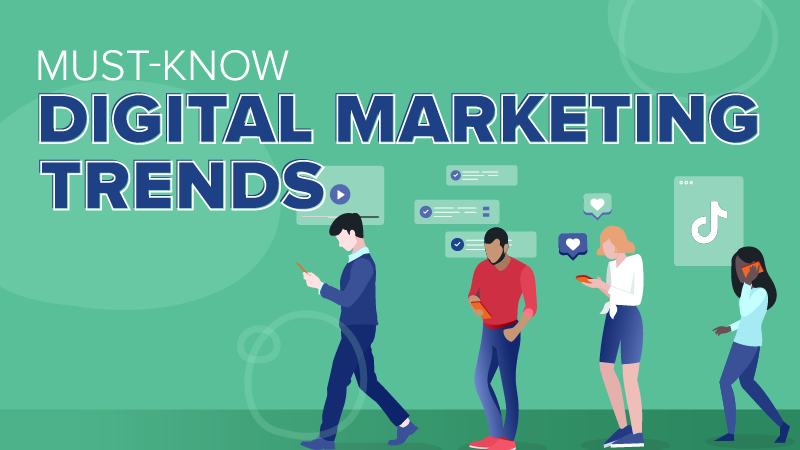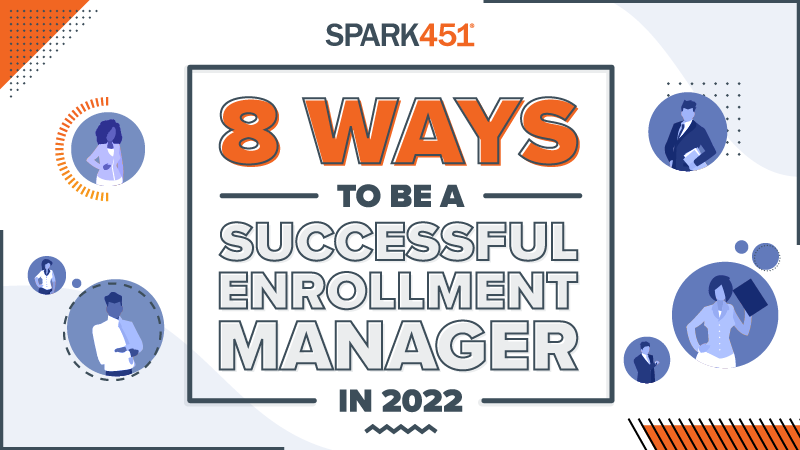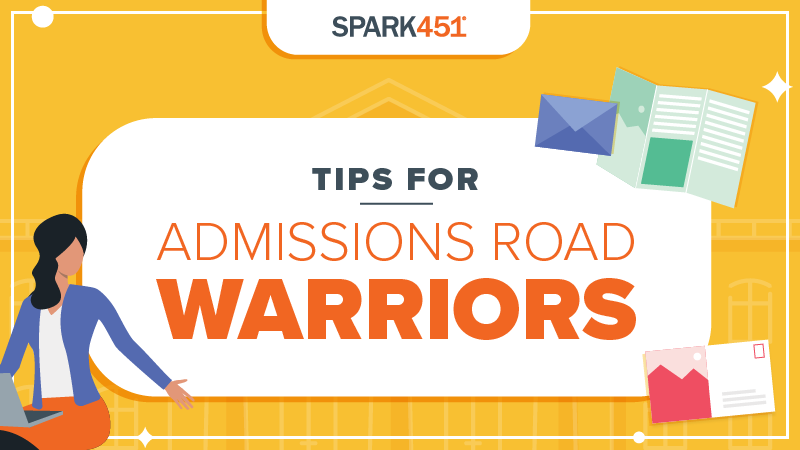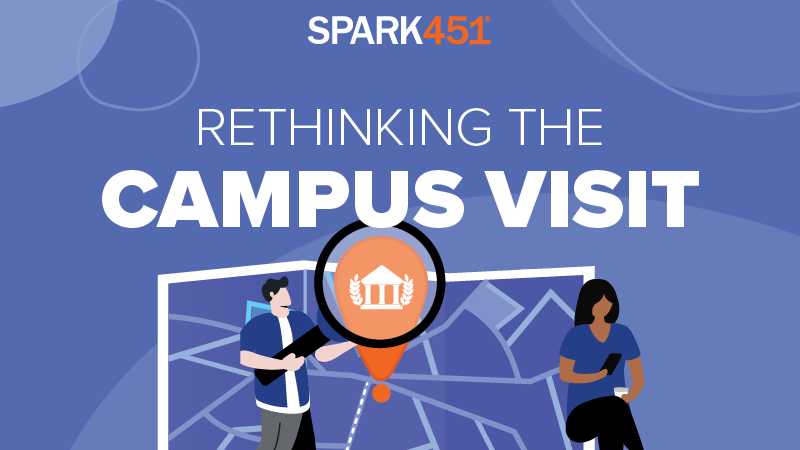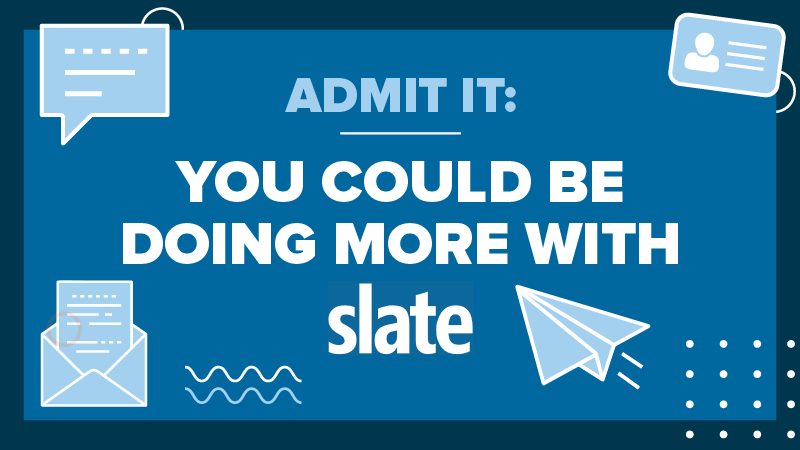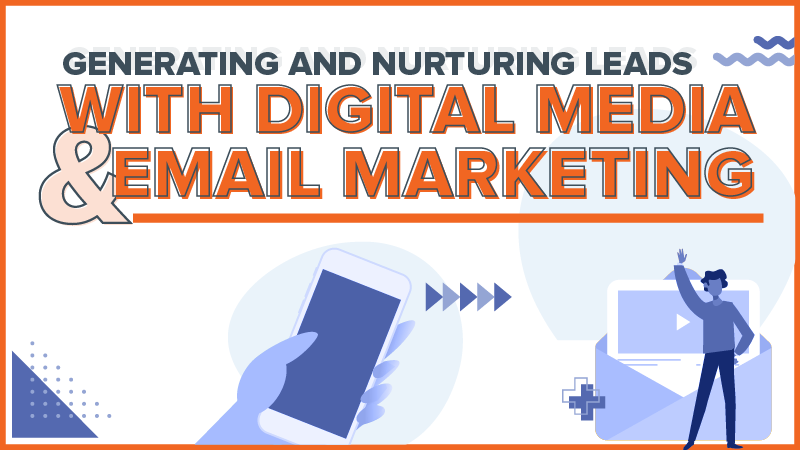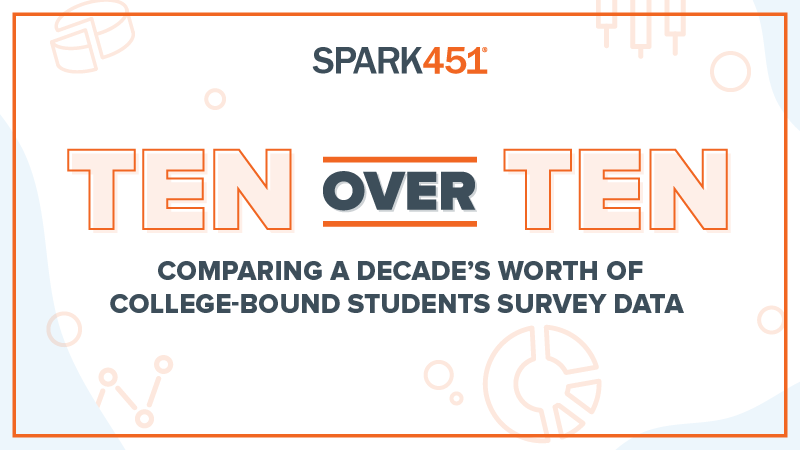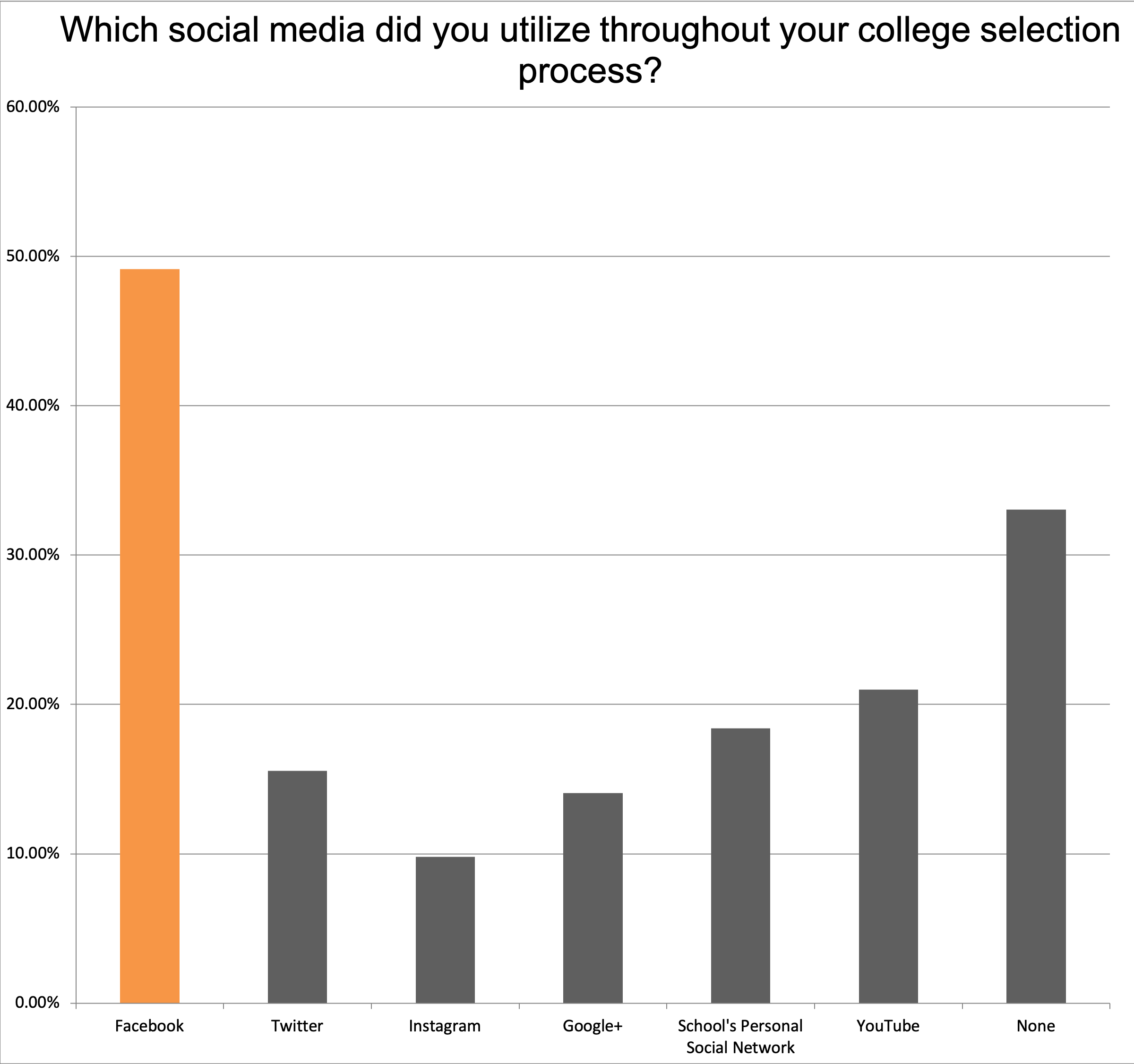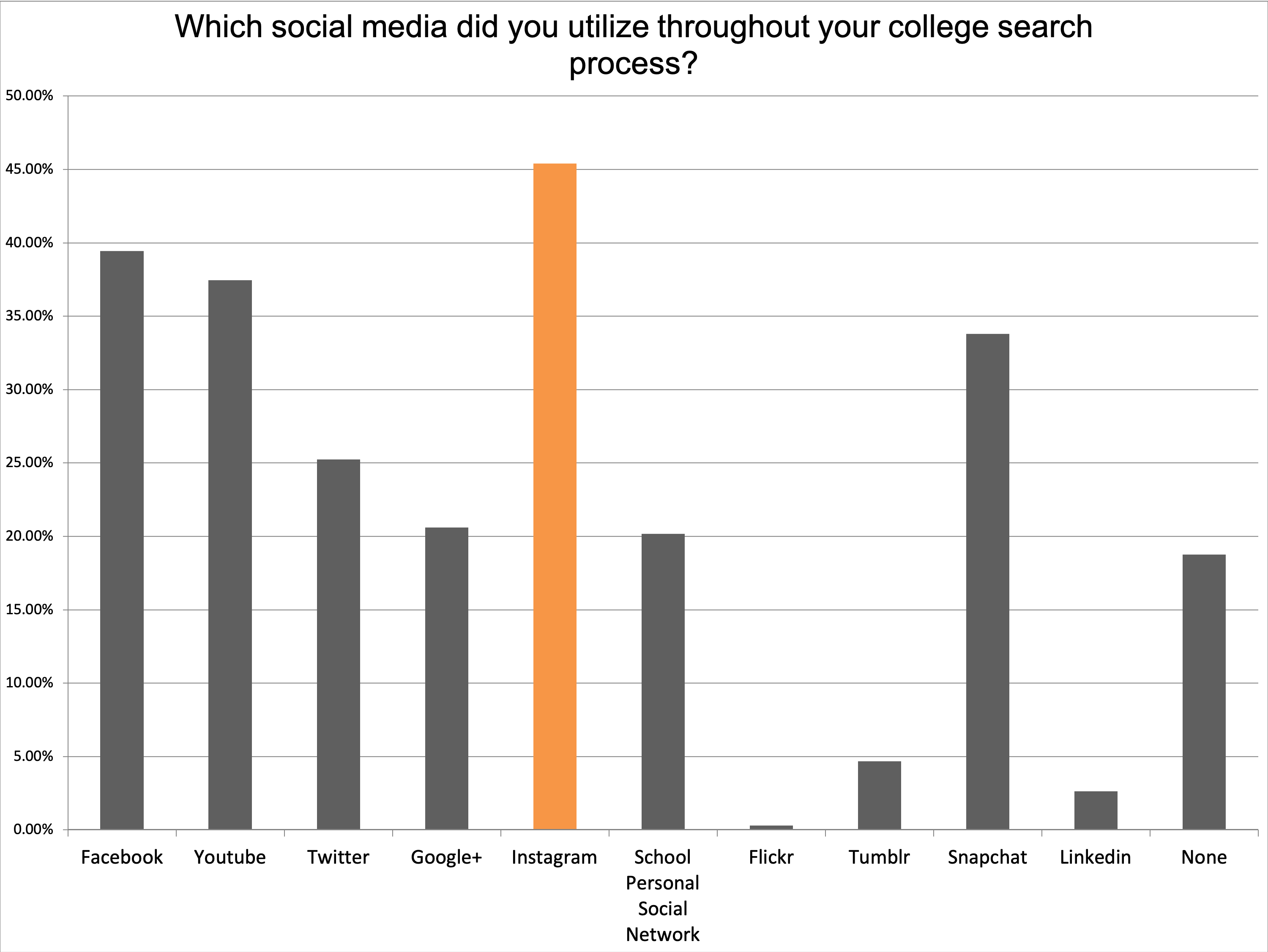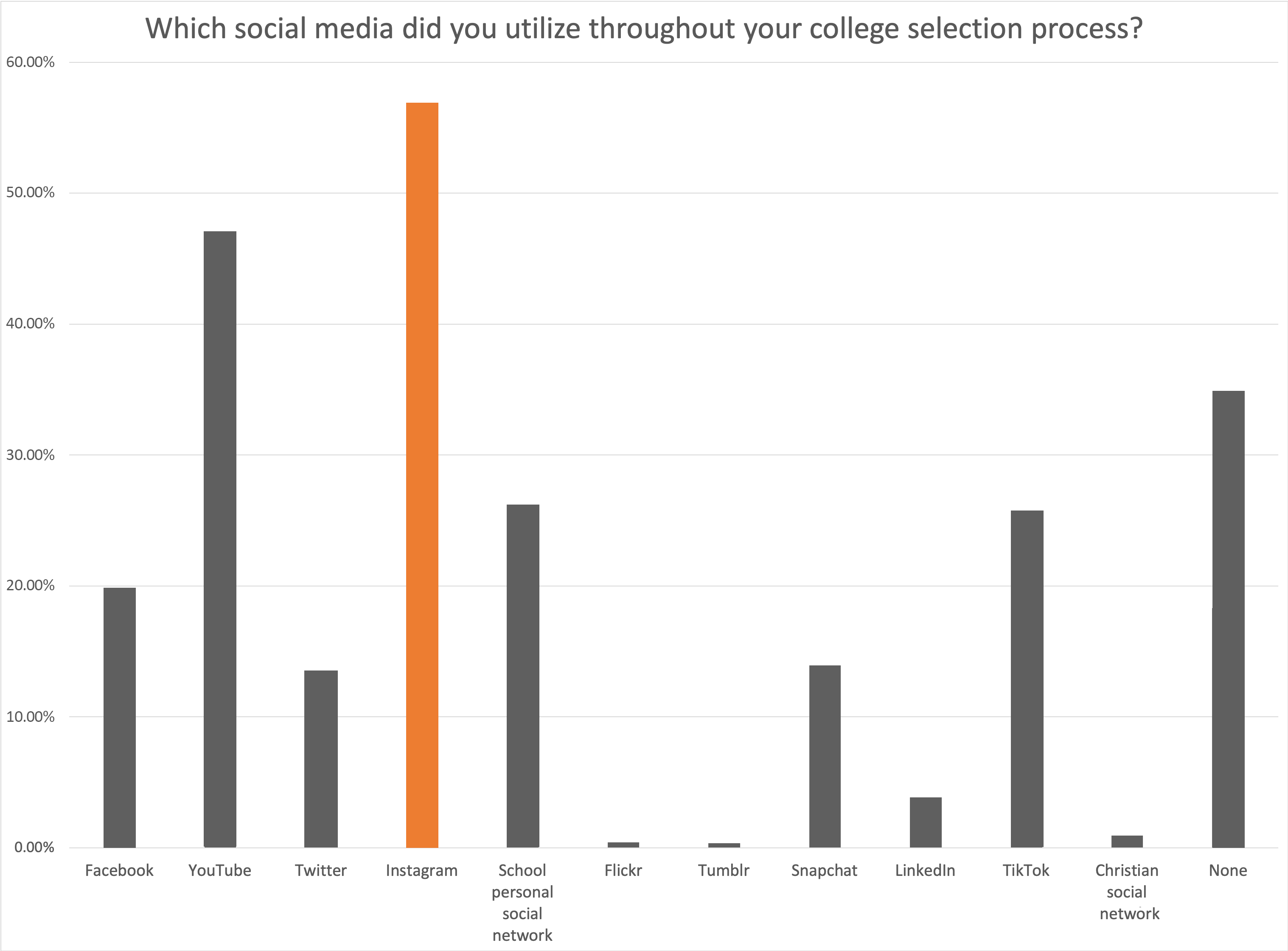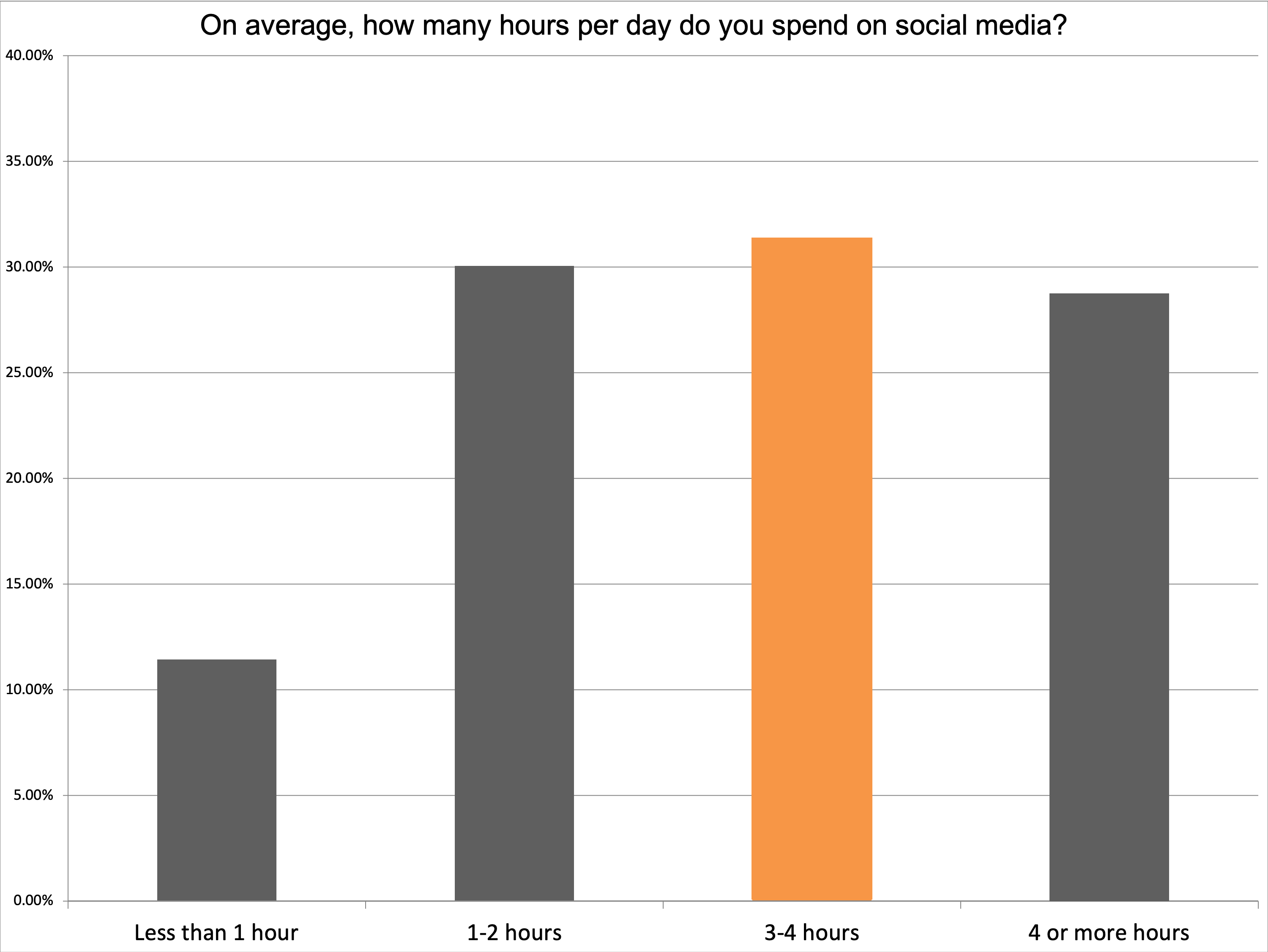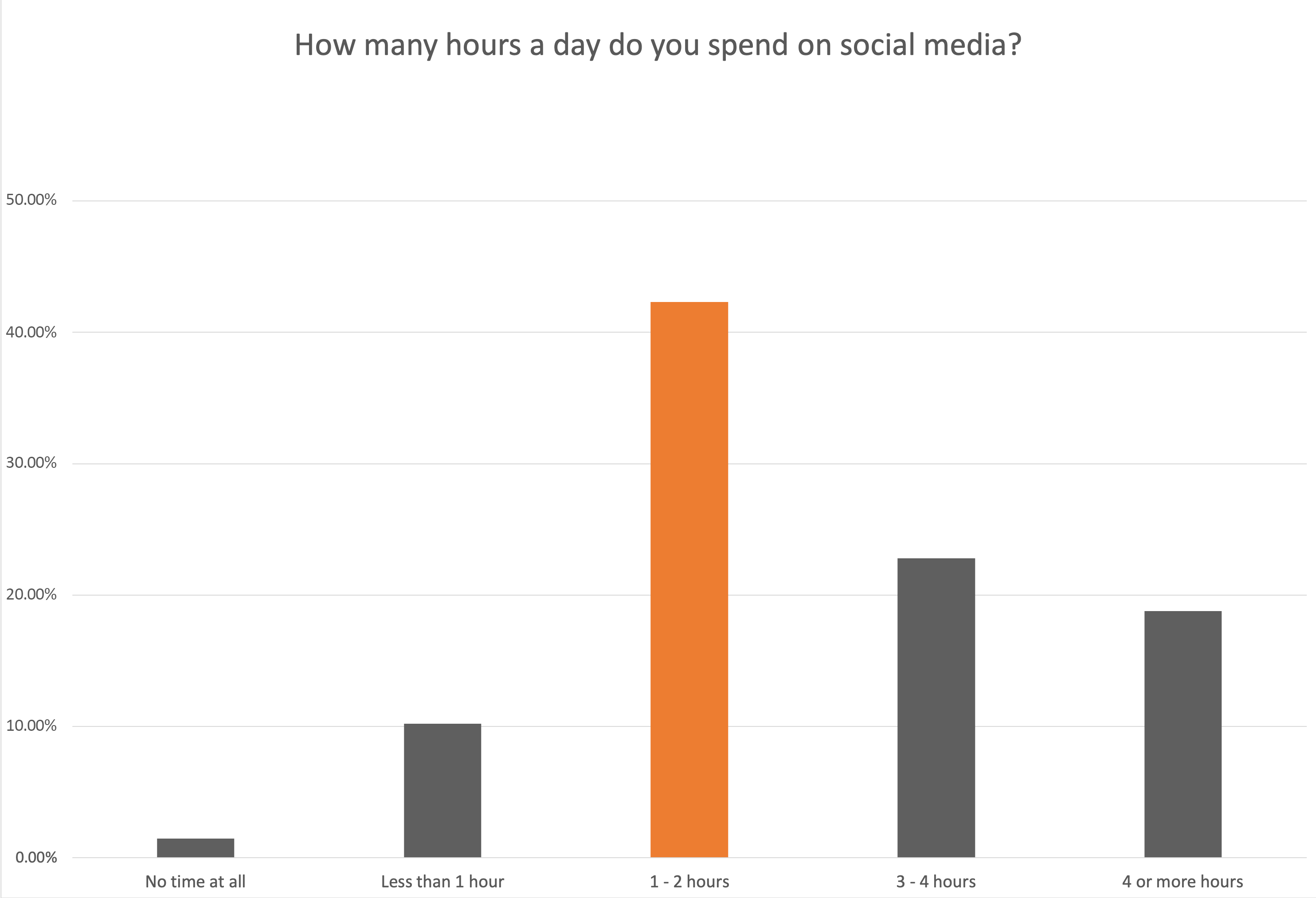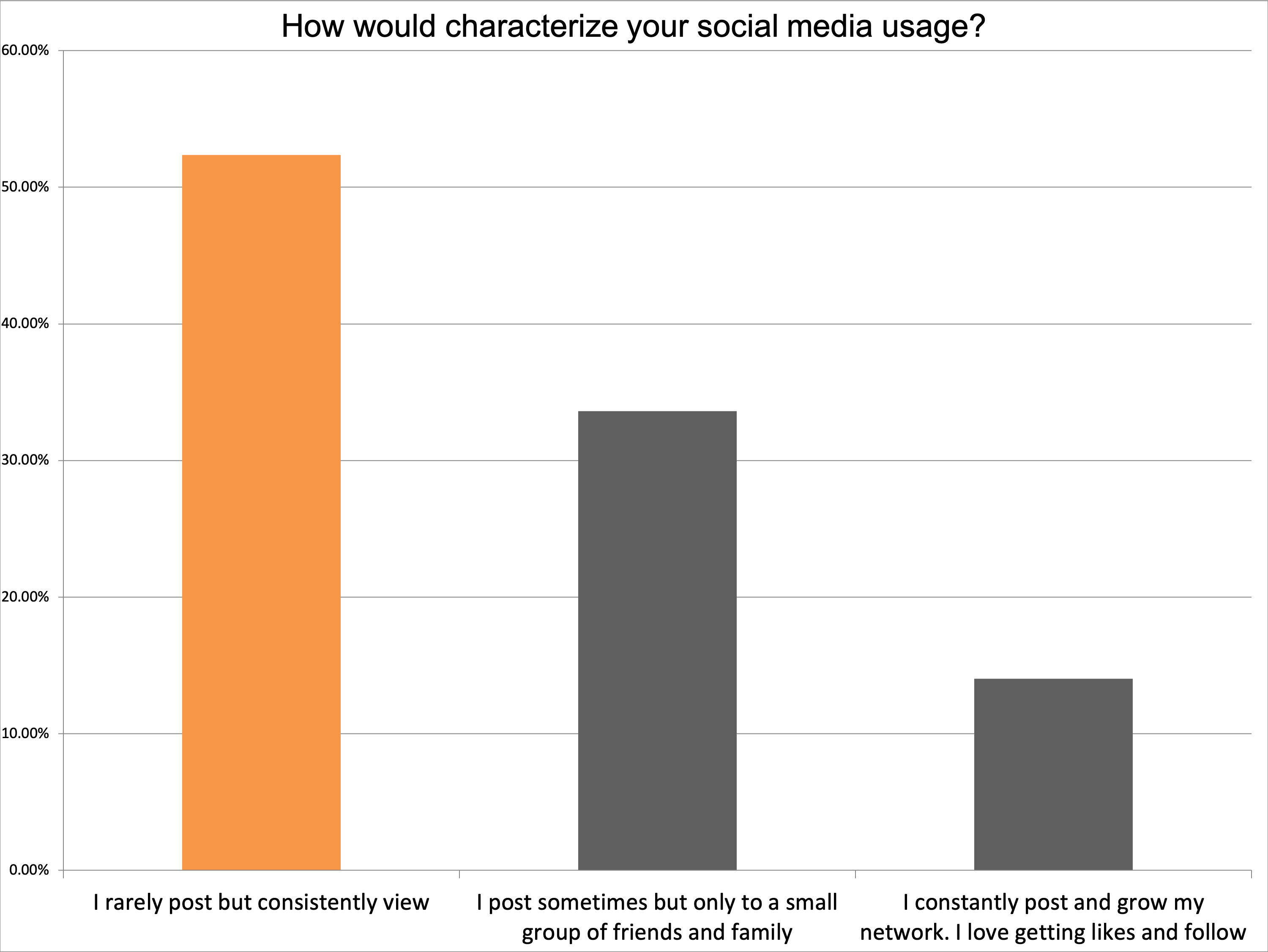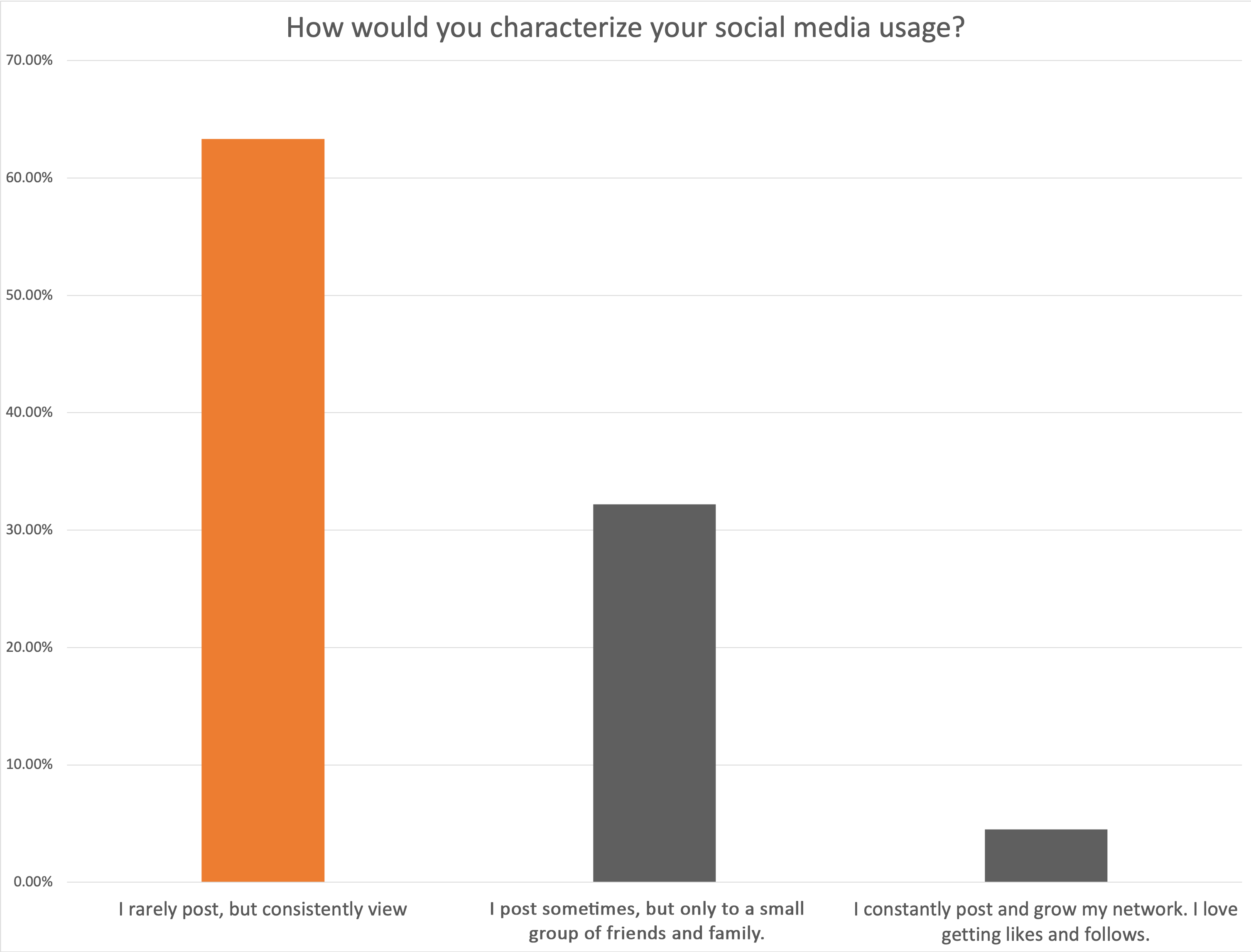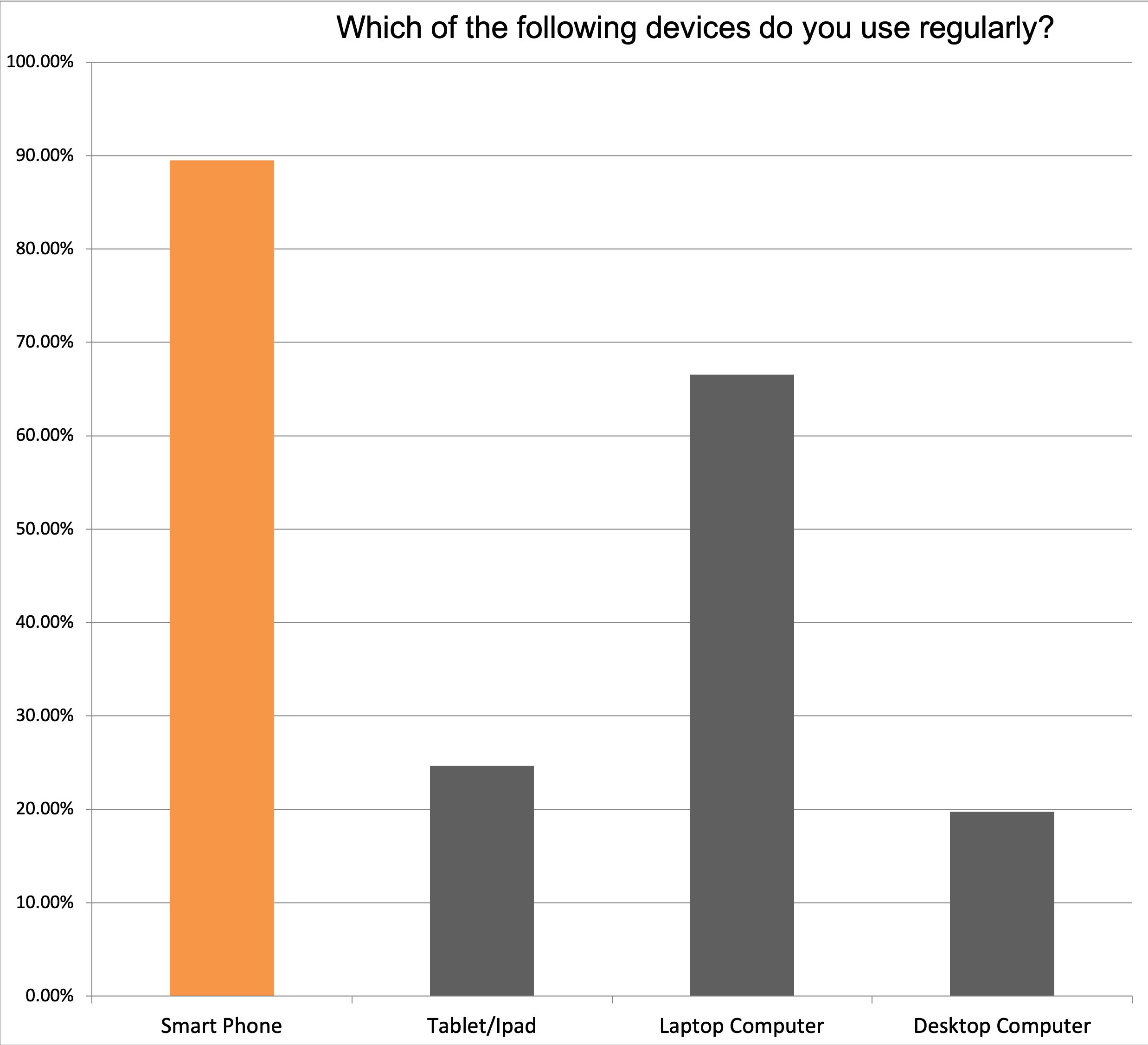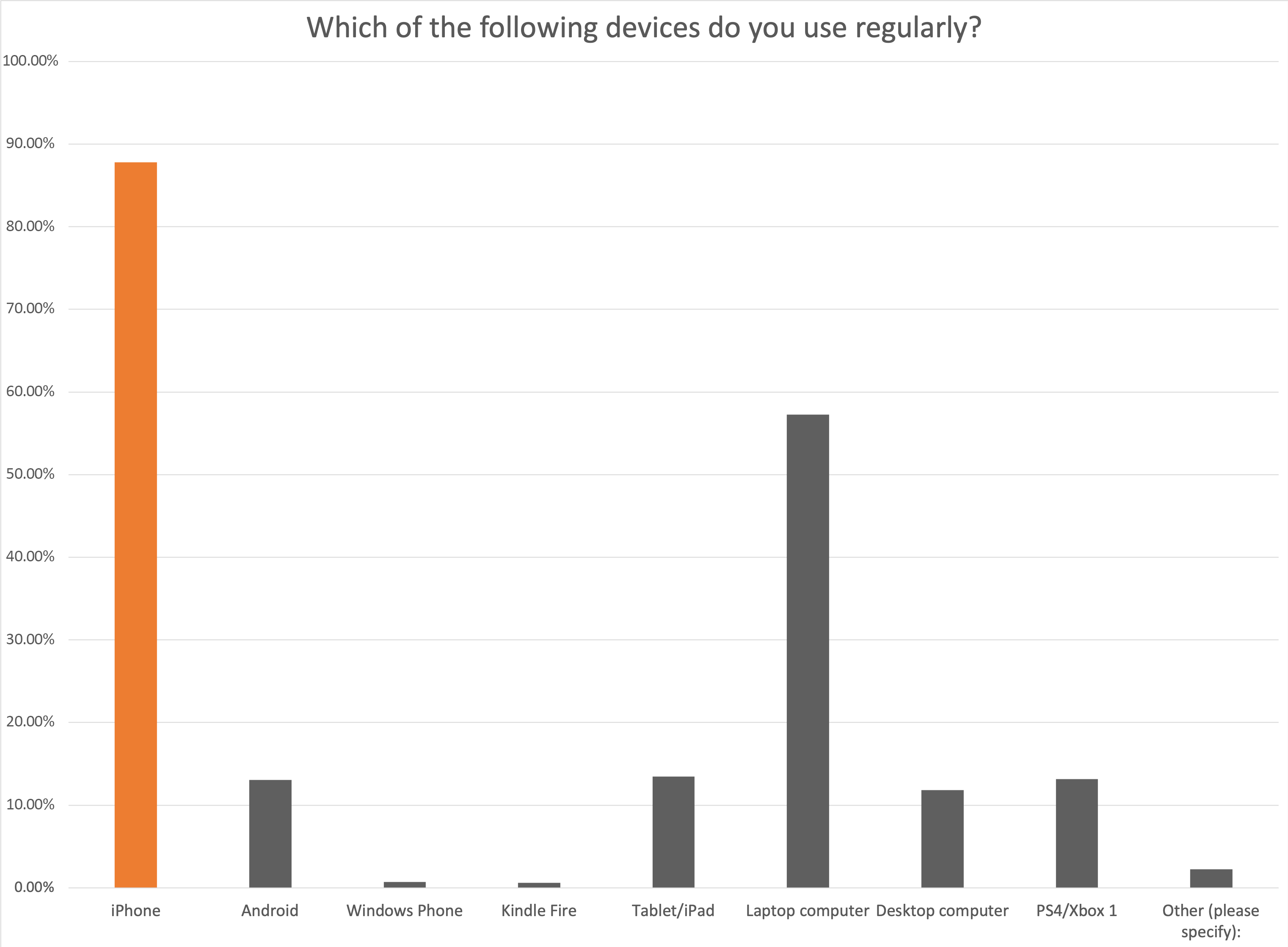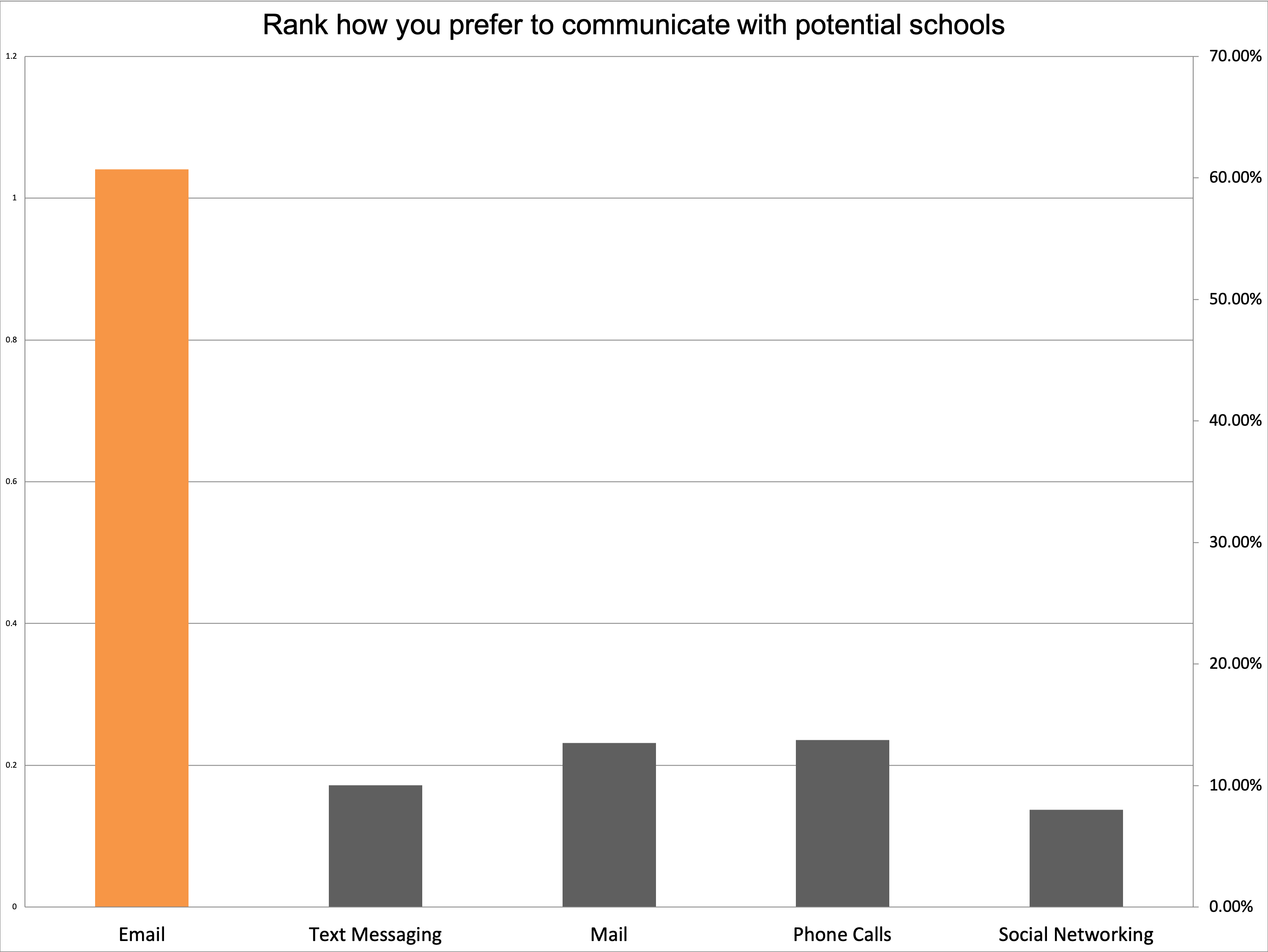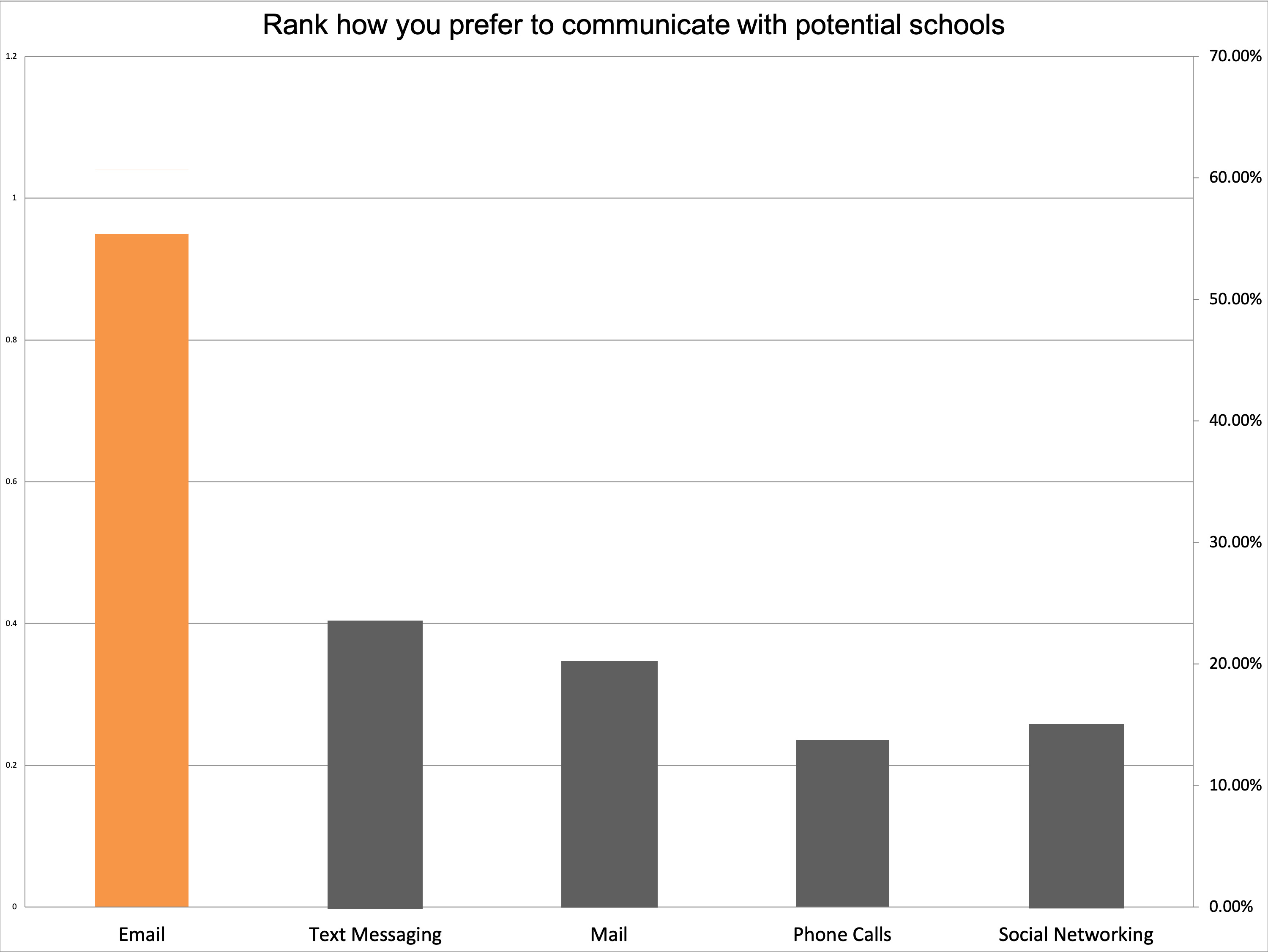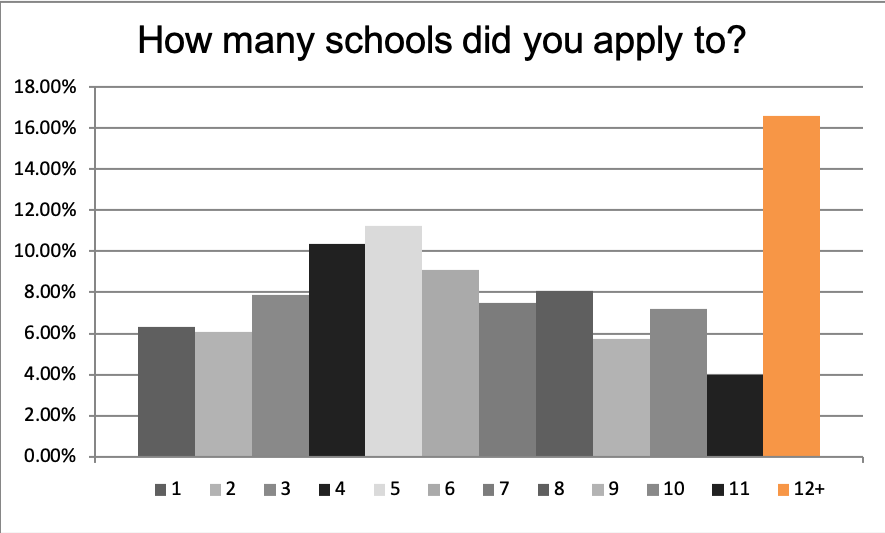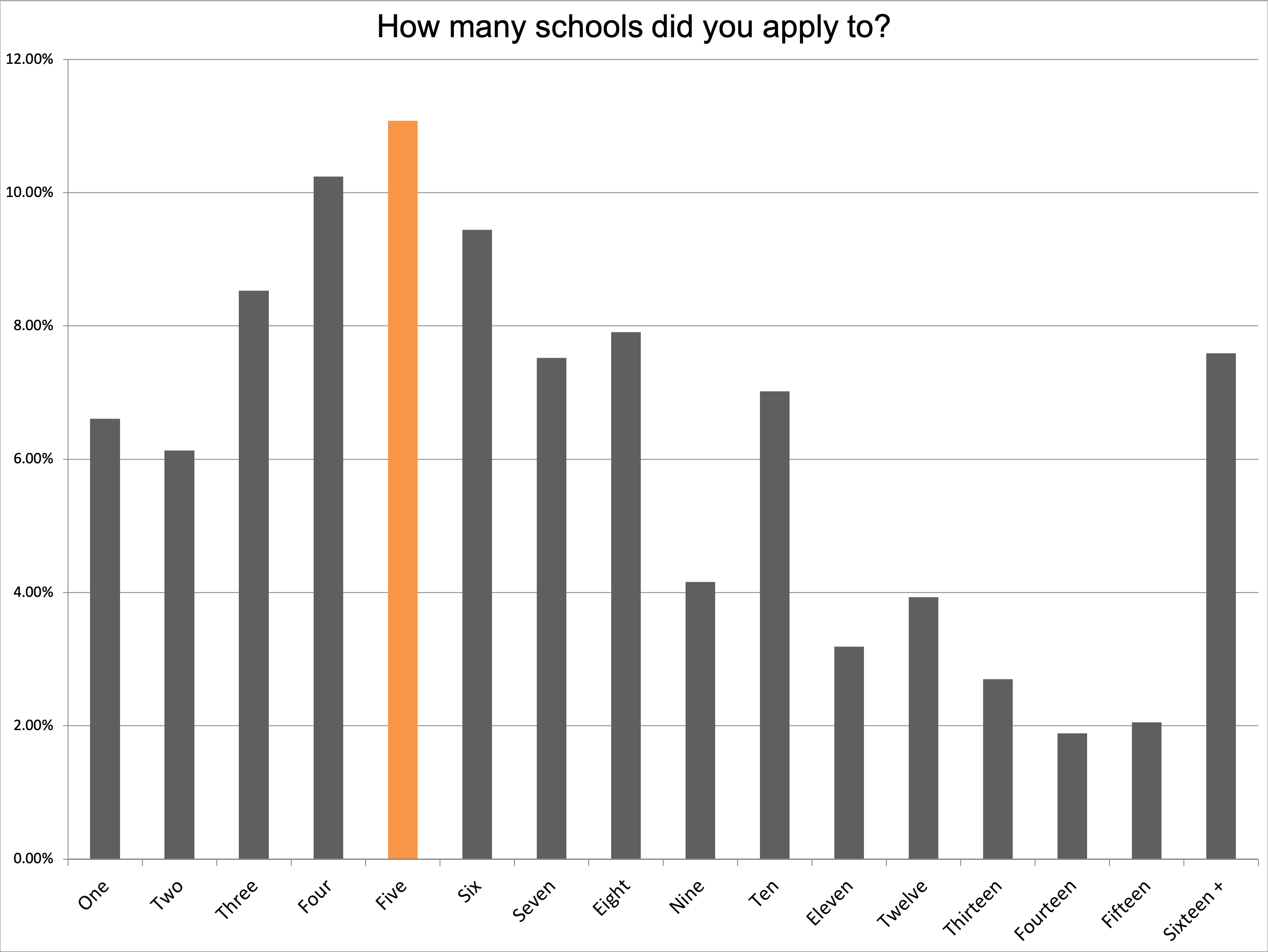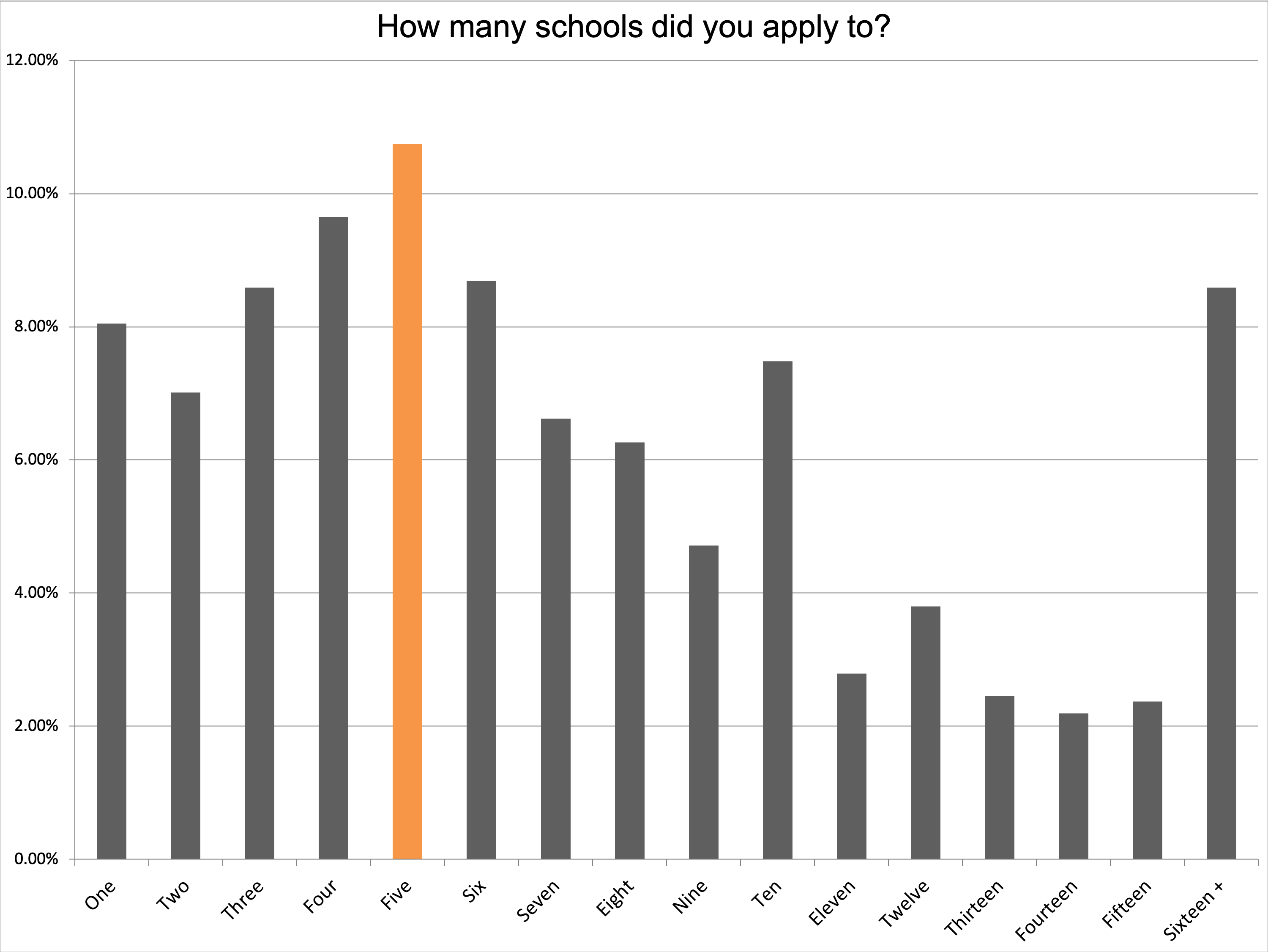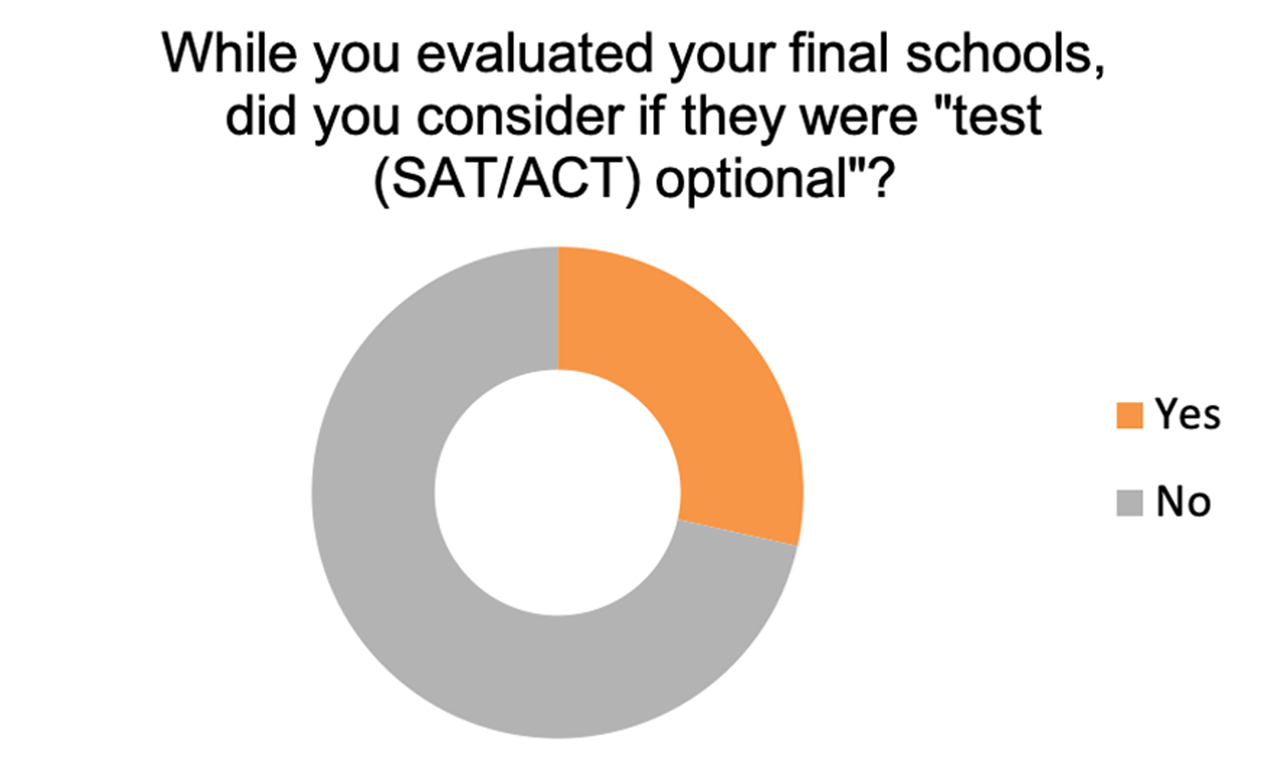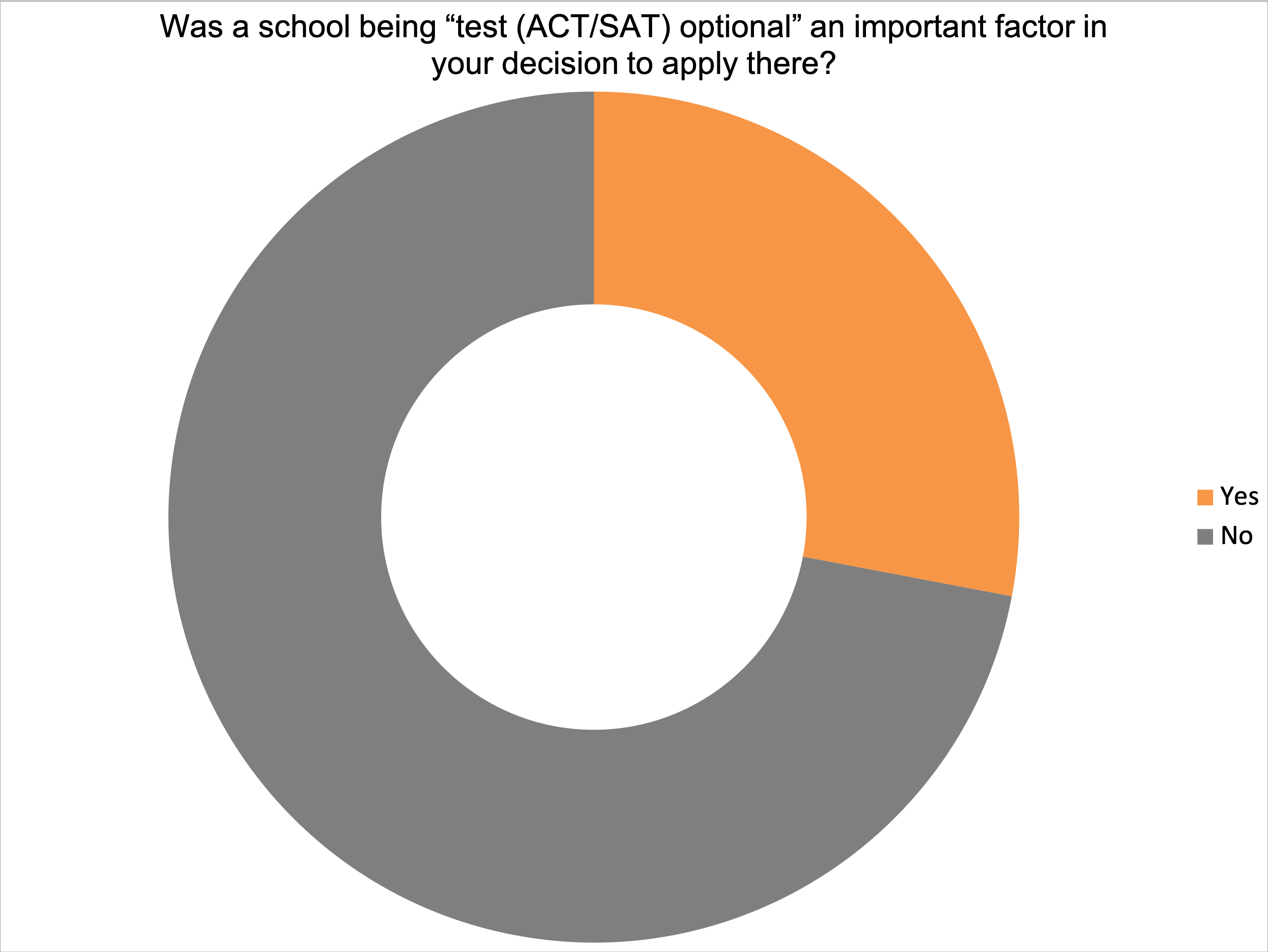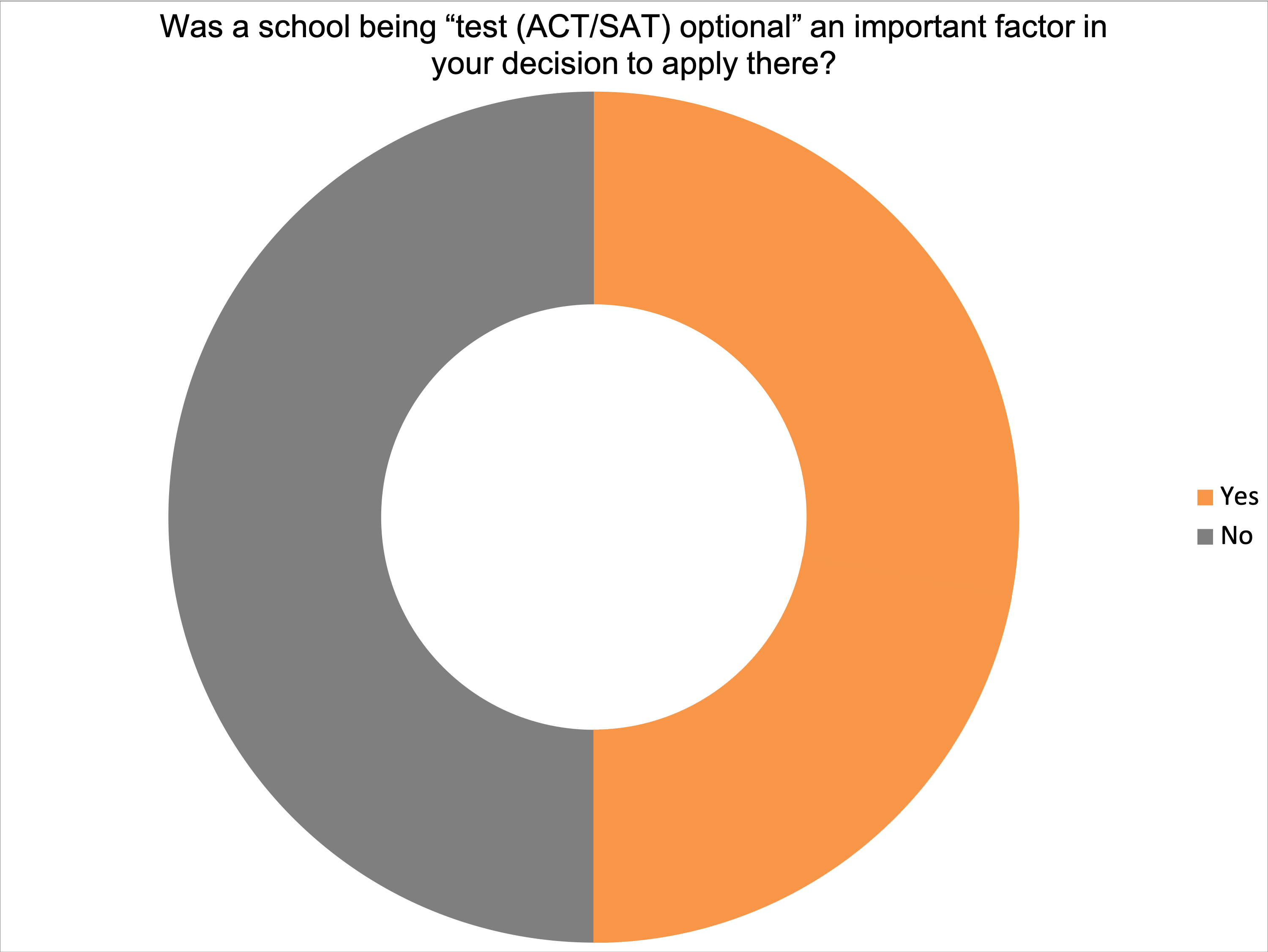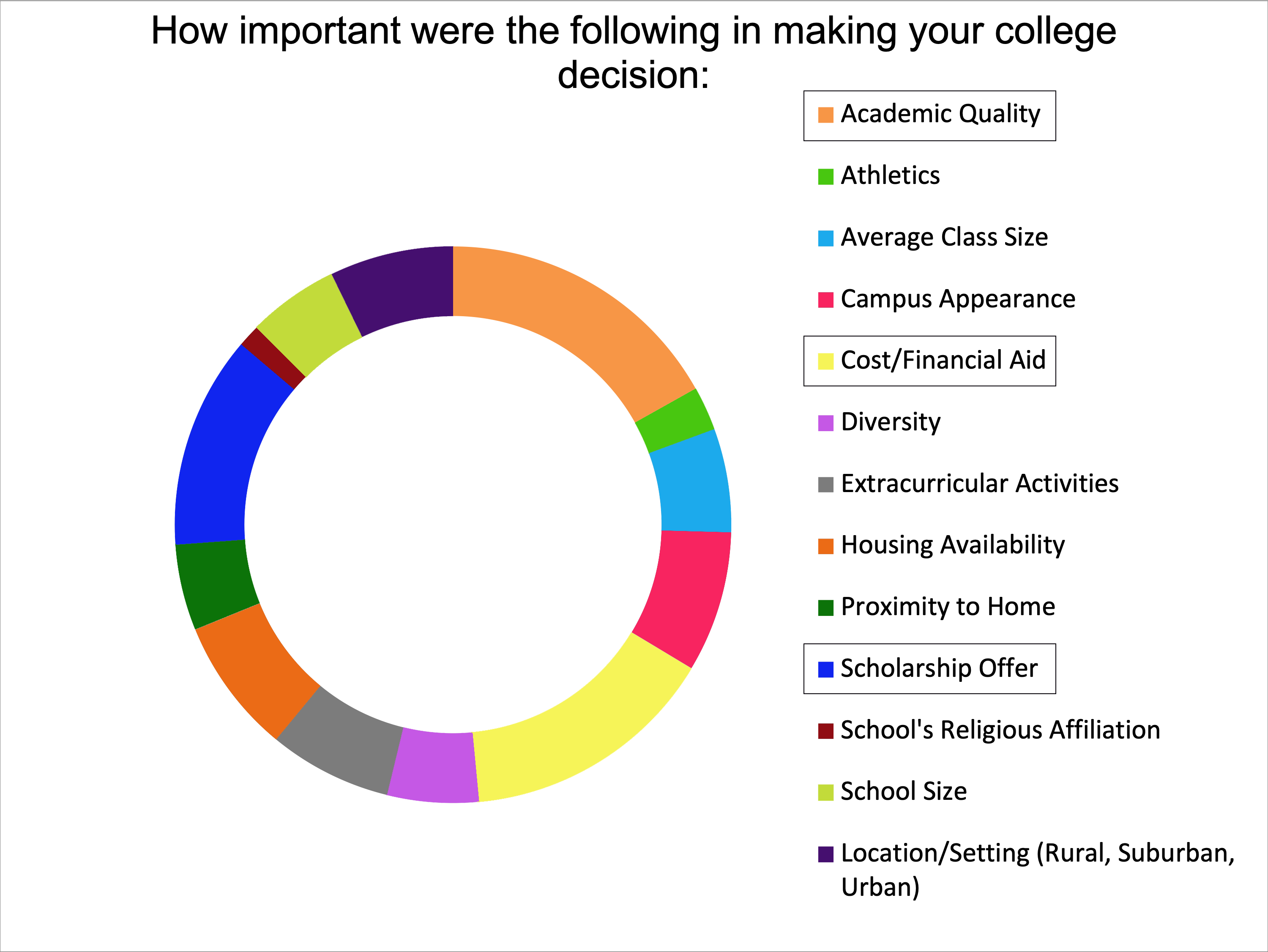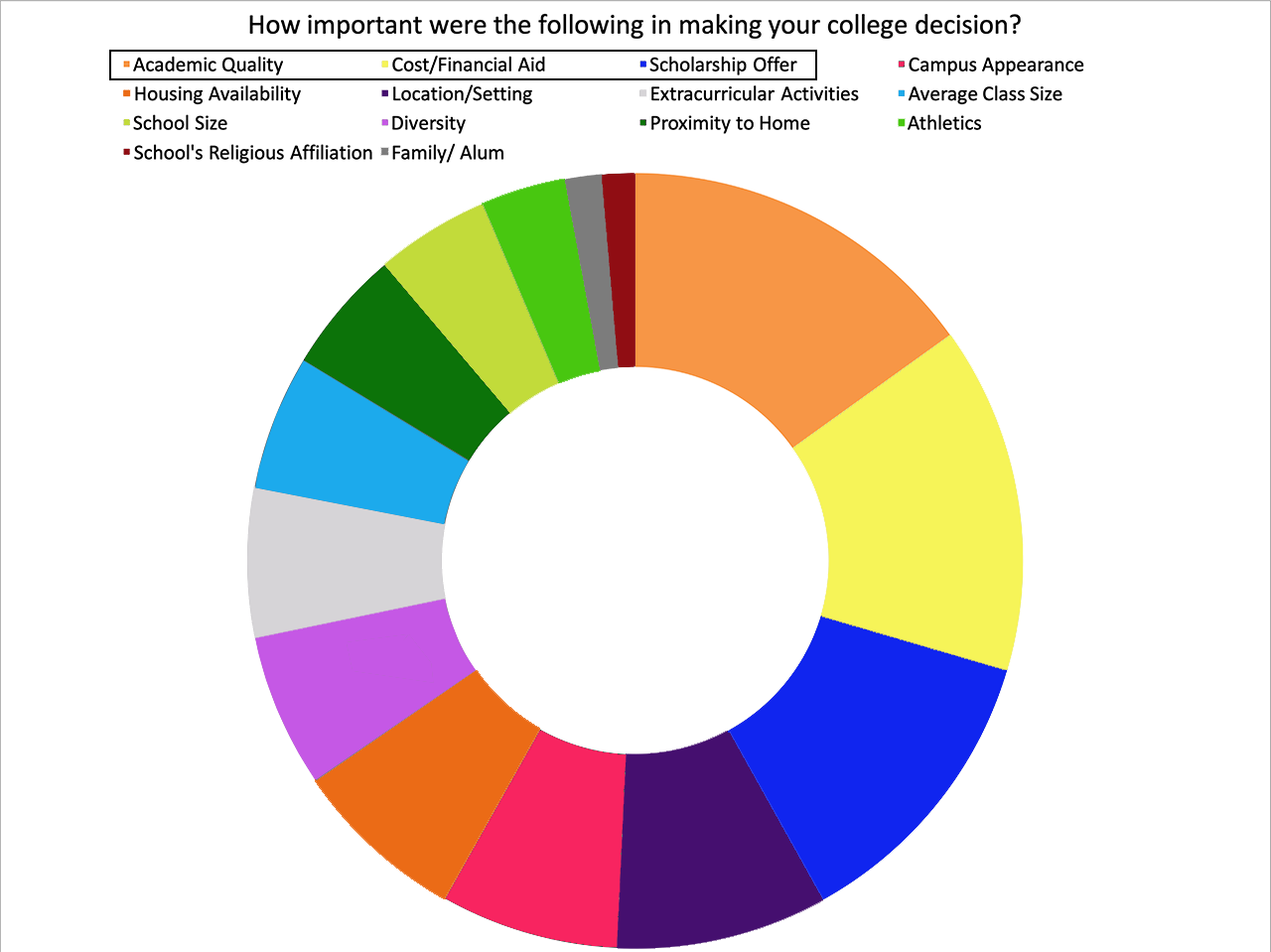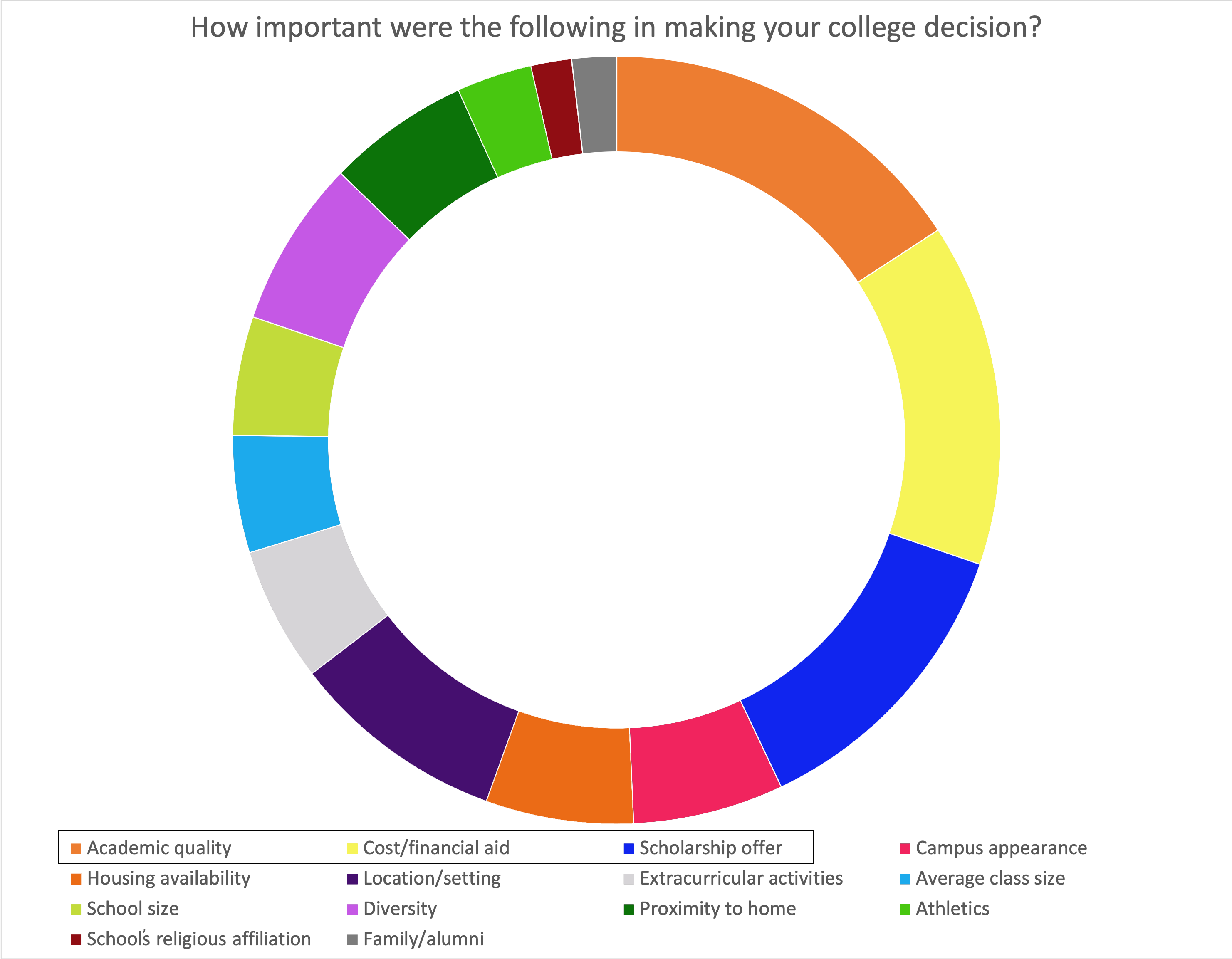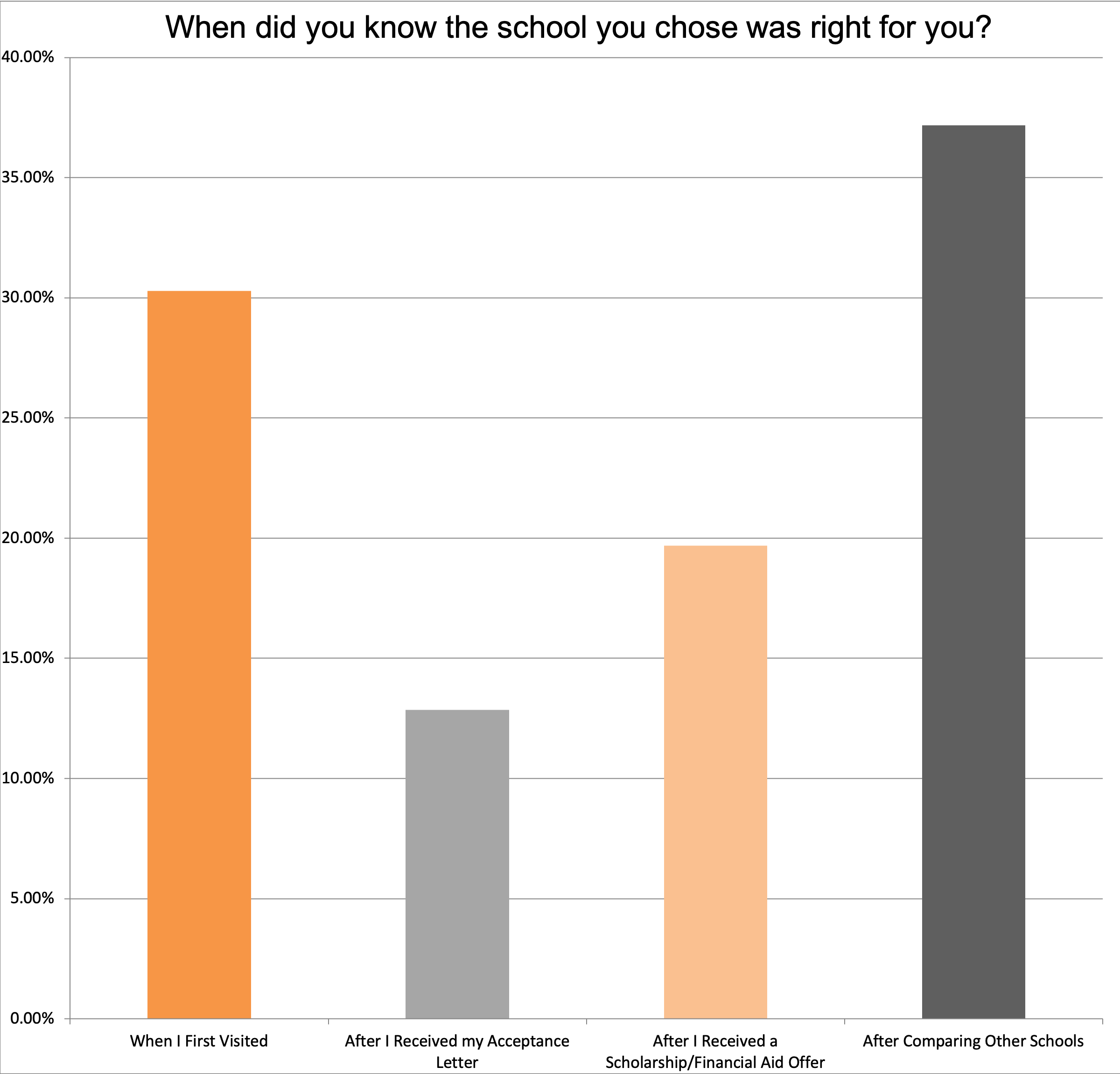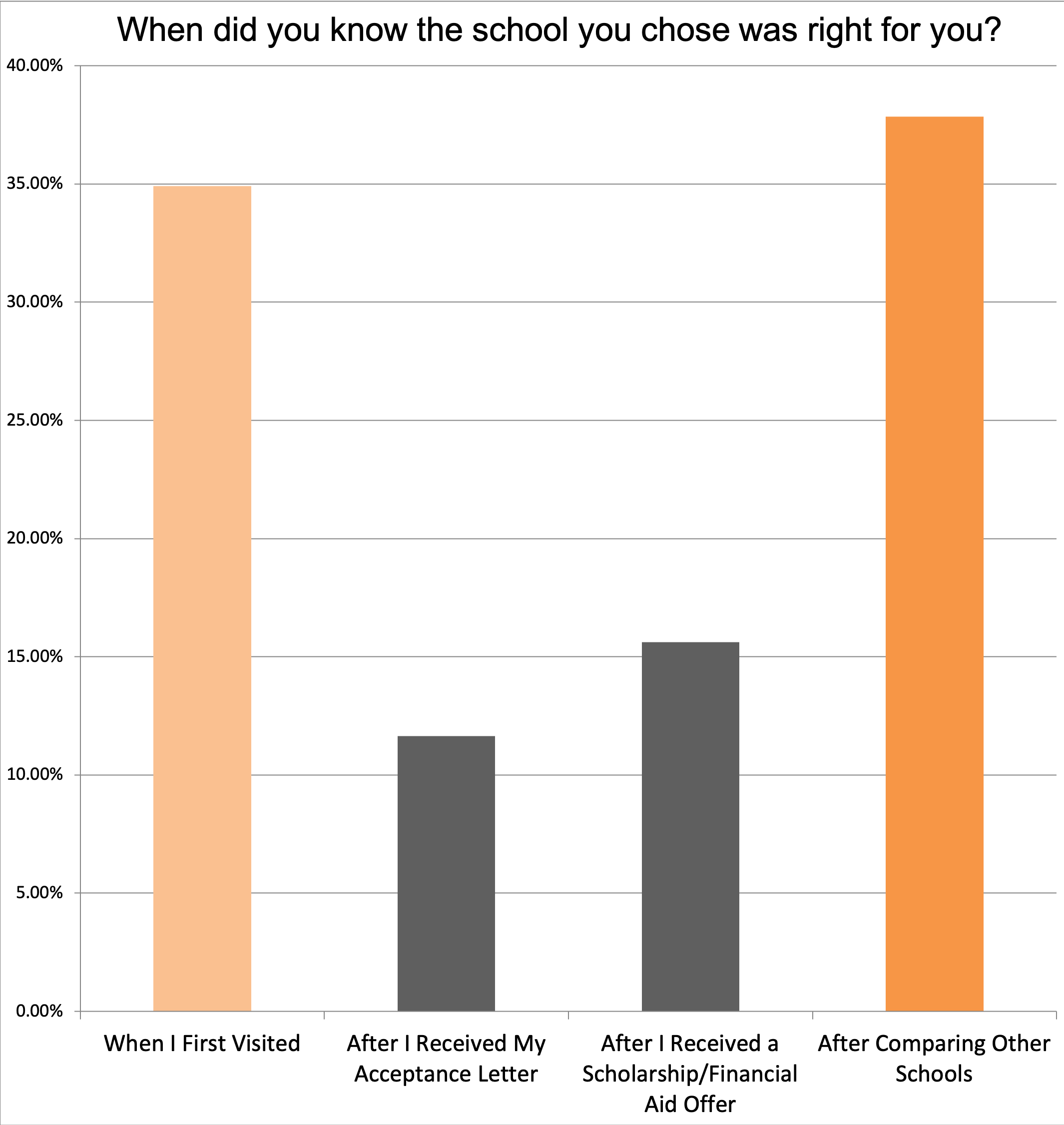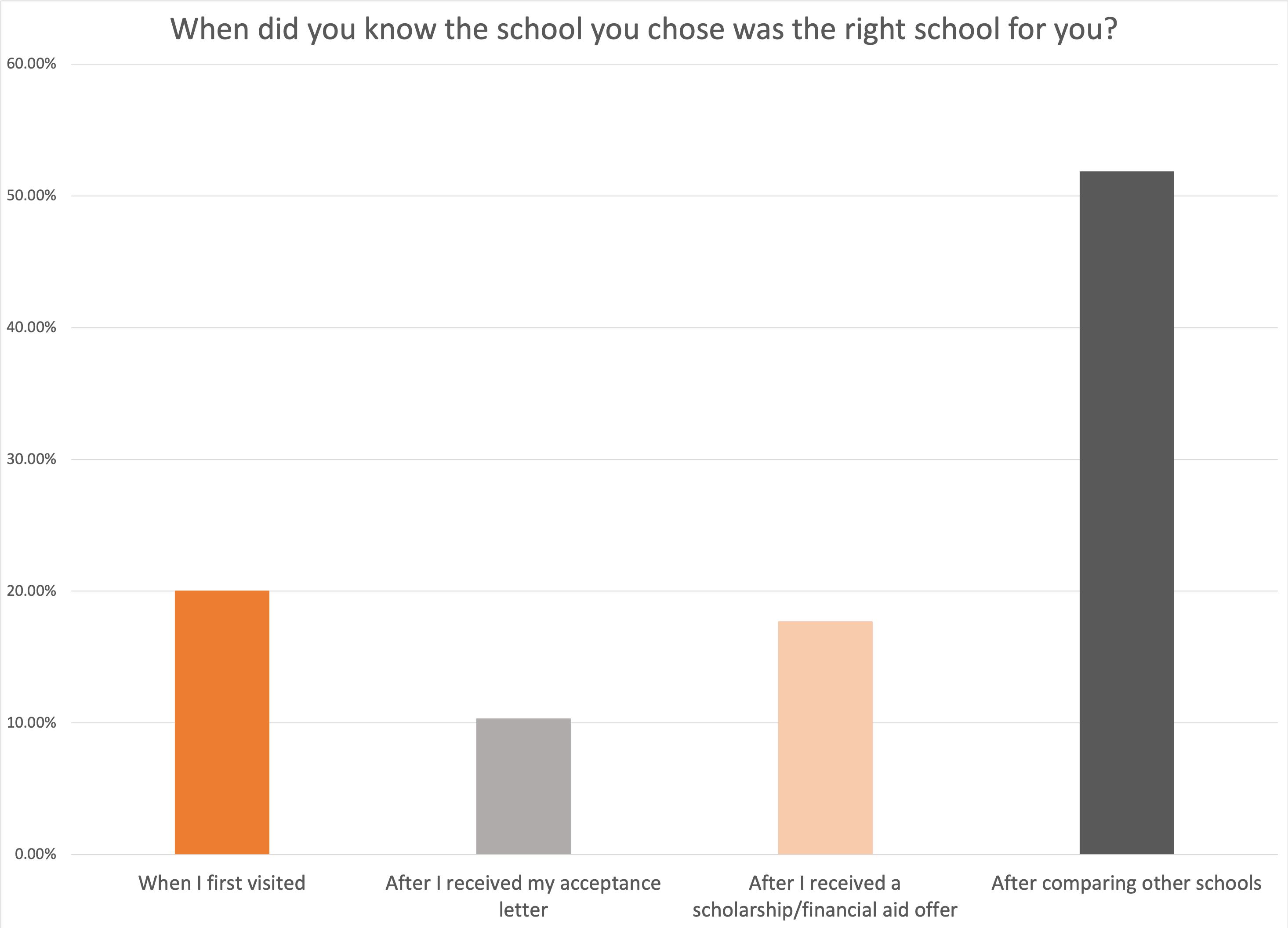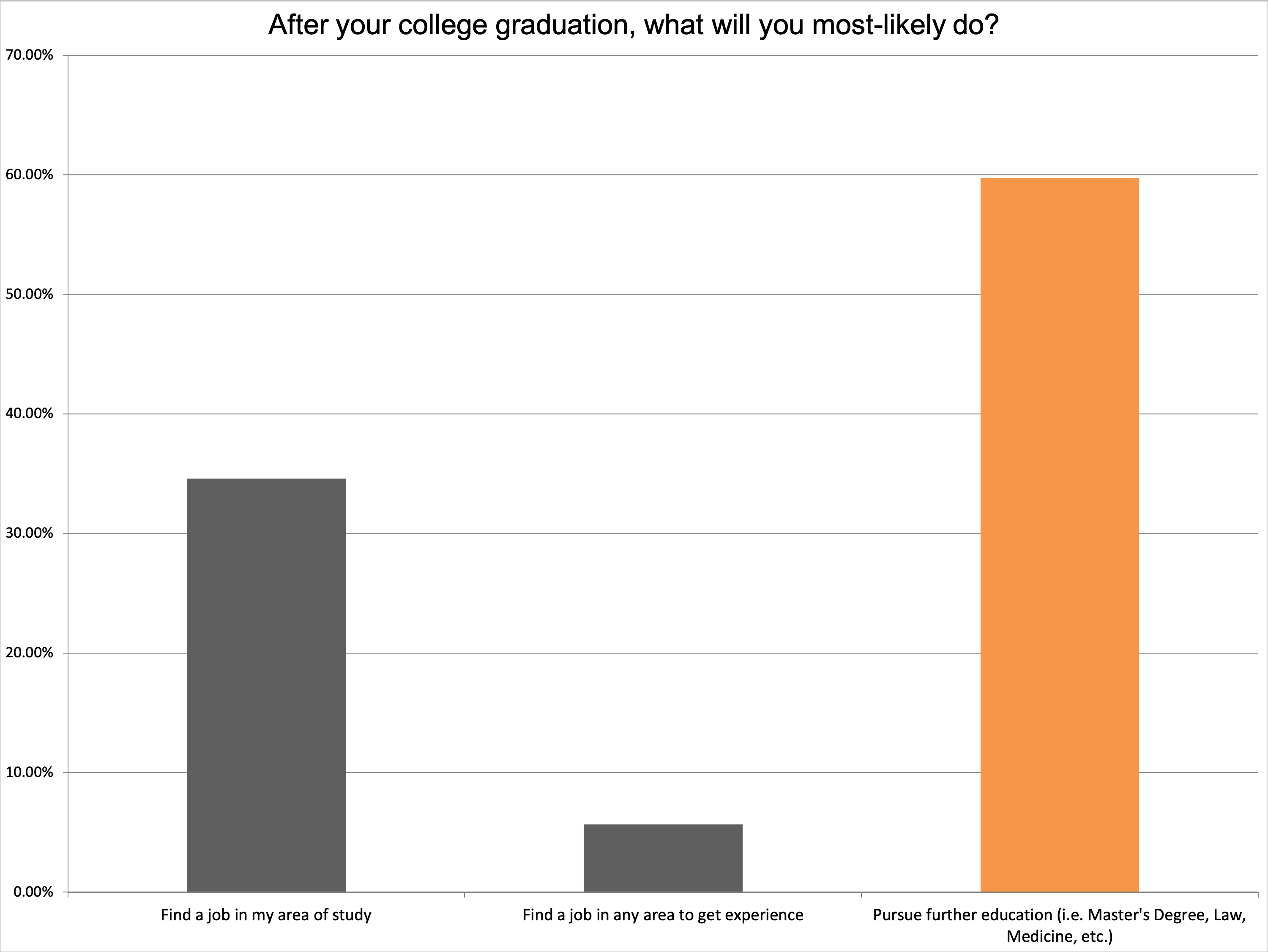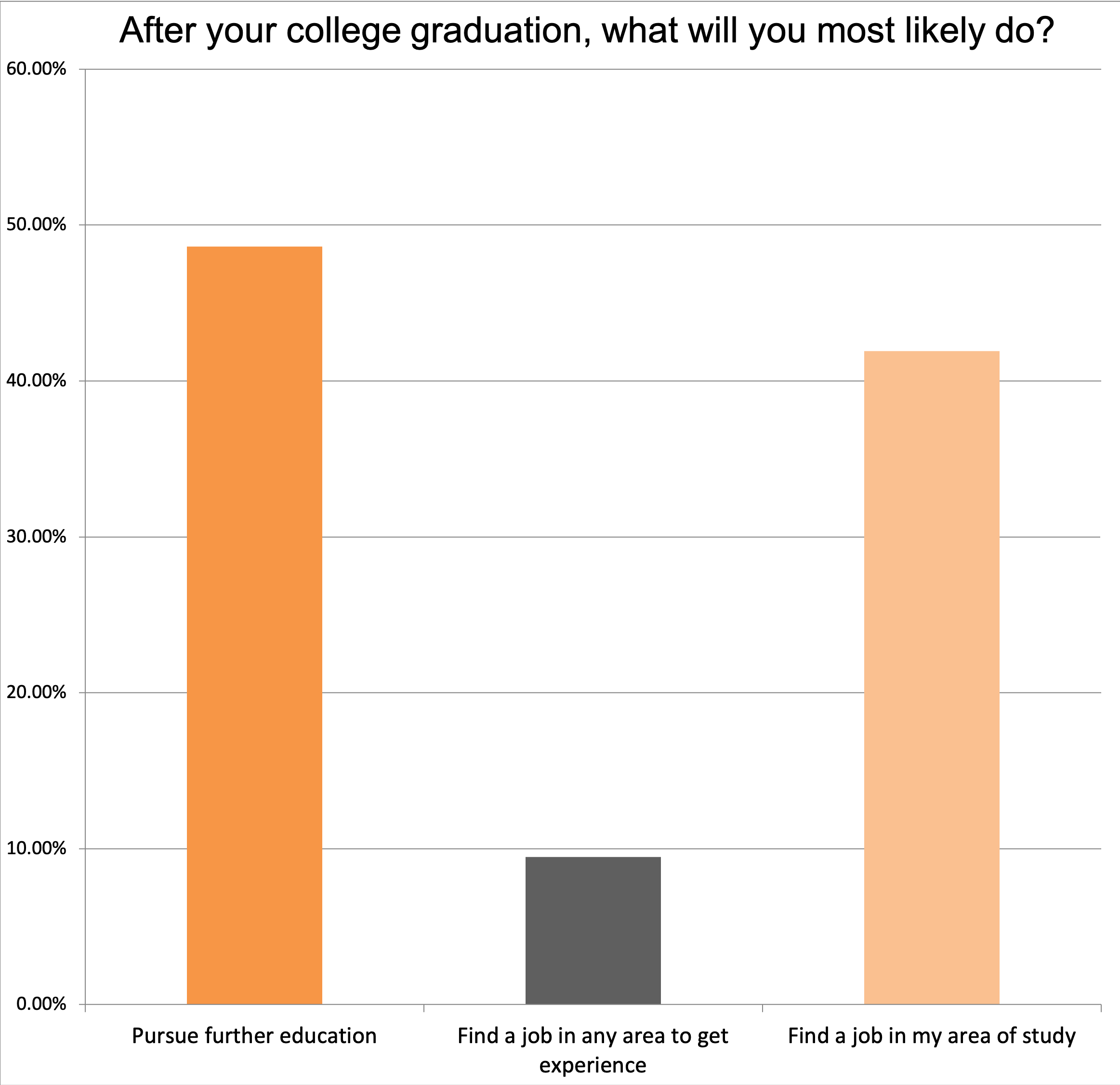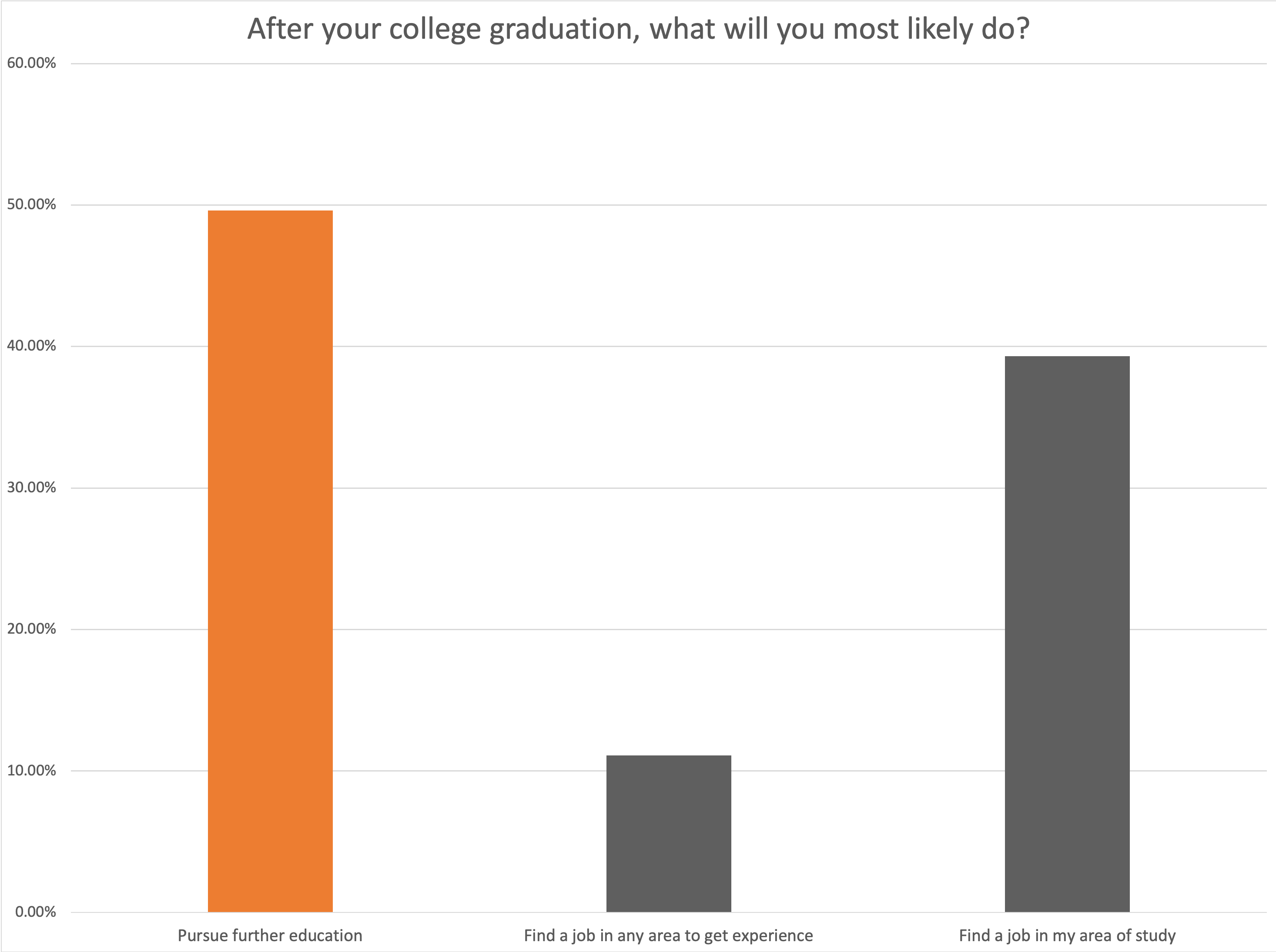5 Digital Media Trends You Can’t Ignore This Year
After keeping a close eye on the performance of our partners schools’ paid media campaigns in the first quarter of this year, Spark451’s digital marketing team has identified some critical trends and insights to share. While we know that enrollment managers like you are fully immersed in one of the most stressful seasons of the enrollment cycle (decision packages, on-campus and online yield events, spring visits, open houses, that looming May 1 deadline, oh my!), it’s never too early (or too late) in the cycle to make sure you’re on top of the latest digital strategies. Plus, the time to start planning for the upcoming fiscal year is just around the corner, so making sure that your marketing strategies are in line with target audience behavior and trends is critical.
Here’s a quick rundown of the most important digital media trends that need to be on your radar right now:
1. Lean Into Video Assets
The marketing industry has long been predicting that video consumption will be the main form of creative by 2022 — and they were right! According to eMarketer, estimates show that this year, “social network video ad spending will grow by 20.1% year over year to $24.35 billion, making up over one-third of total U.S. social network ad spending.” In house at Spark451, we’ve seen major growth in video over the past year, with video creative showing higher click-through rates (CTR) than static content ads on social networks. In fact, we’ve seen several video ads, which we have run as recently as last month, exceeding our CTR benchmarks by 147%!
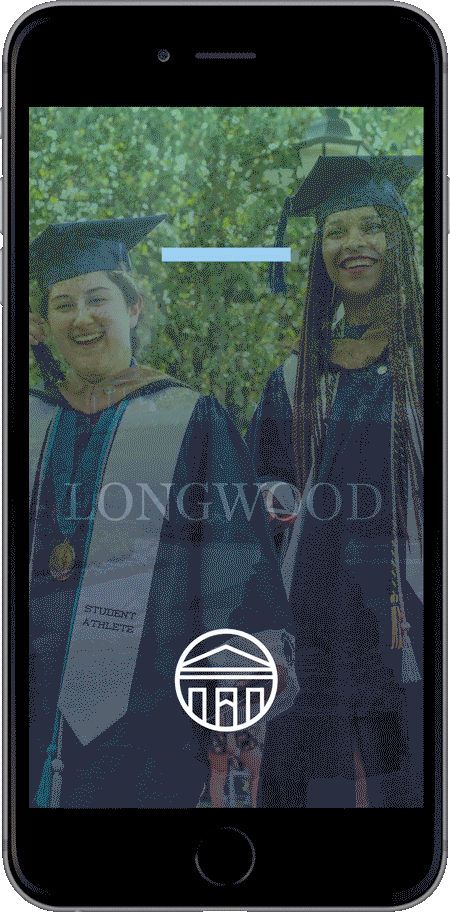
"We estimate that in 2022, U.S. social network video ad spending will grow by 20.1% year over year (YoY) to $24.35 billion, making up over one-third of total U.S. social network ad spending."
- eMarketer, 2022
2. Use User-generated Content
It’s a TikTok world, and we’re just living in it! TikTok really brought to life the concept of user-generated content, and almost every social platform has tried to follow suit since. Users want to be able to see the “real” deal; the “behind-the-scenes” view of whatever they’re exploring.
Are your student ambassadors running campus tours? Have them take a video snippet of a tour or a favorite location on campus. Get clips from sports events, open houses, or arts festivals — make sure you’re showing the campus in the most authentic way possible, because users often see through the polish of traditional ads. There’s still a use case for traditional ads, but 2022 is shaping up to see a turning point in increased user-generated content in the ad space.
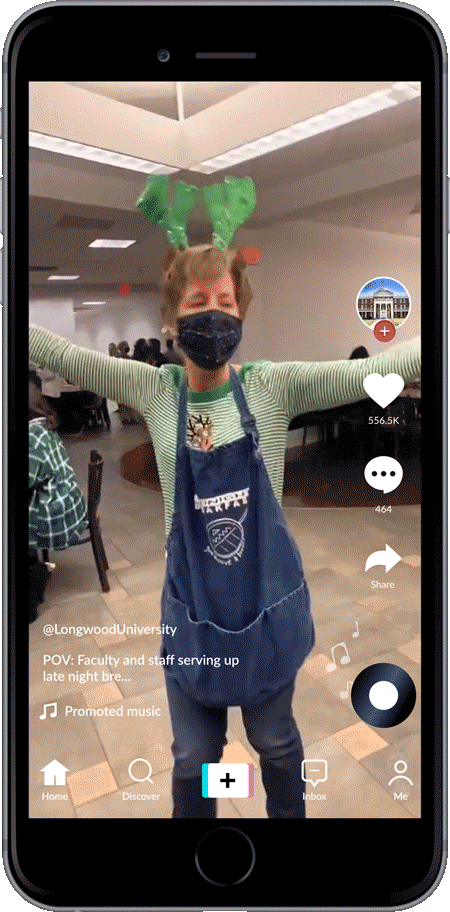
3. Consider Connected TV
Connected TV (CTV), which allows you to stream your favorite shows and watch live TV on your smart device, became a household name at the height of the pandemic, and it remains just as popular as we attempt to transition into a post-pandemic world. CTV enables us to watch content on any device connected to the internet. With that comes the ability to advertise using video ads, in the same way commercials run on linear TV. The difference is that we can now run video ads across a variety of popular platforms and devices, such as Roku, AppleTV, Samsung, Fire Stick, XBox, and any smart TV. Additionally, we’re able to target more precisely by using data from Oracle, Nielsen, and other data sources which help us identify our very niche audiences. The biggest difference? It’s all measurable. You’ll be able to see impressions, eCPM, view-thru rates, and you’ll even have the ability to retarget users who have watched your video ad!
According to a recent Forbes article, which calls CTV the “fastest-growing video advertising platform,” “80% of TV households have at least one connected TV device (a penetration higher than cable TV).” Frankly, CTV is the most critical digital marketing tactic that higher education institutions are missing out on right now — and they need to start adding it to their marketing plans!
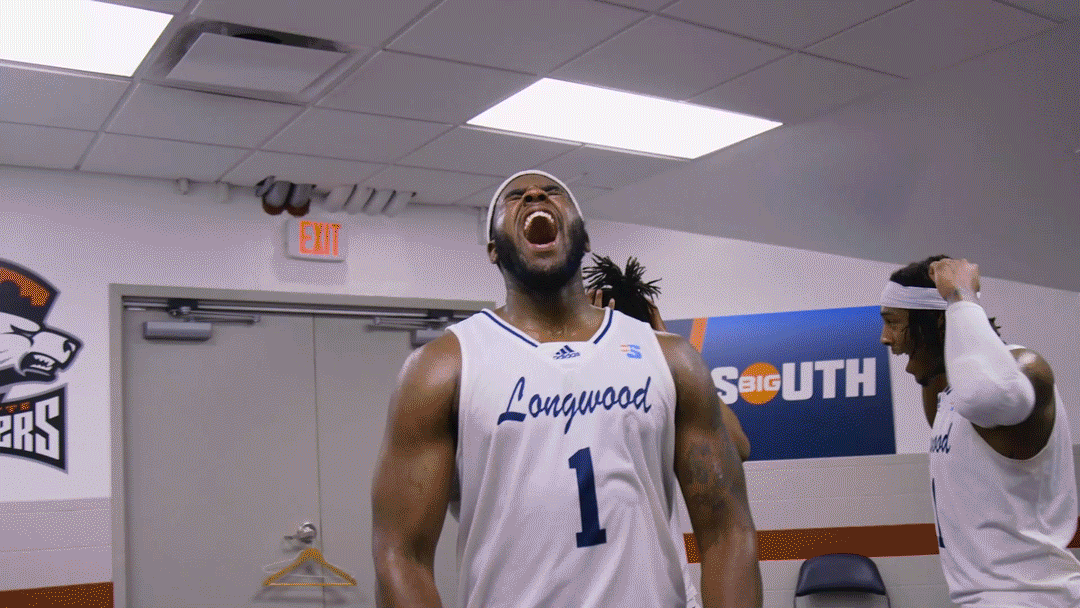
"CTV is the most critical digital marketing tactic that higher education institutions are missing out on right now — and they need to start adding it to their marketing plans!"
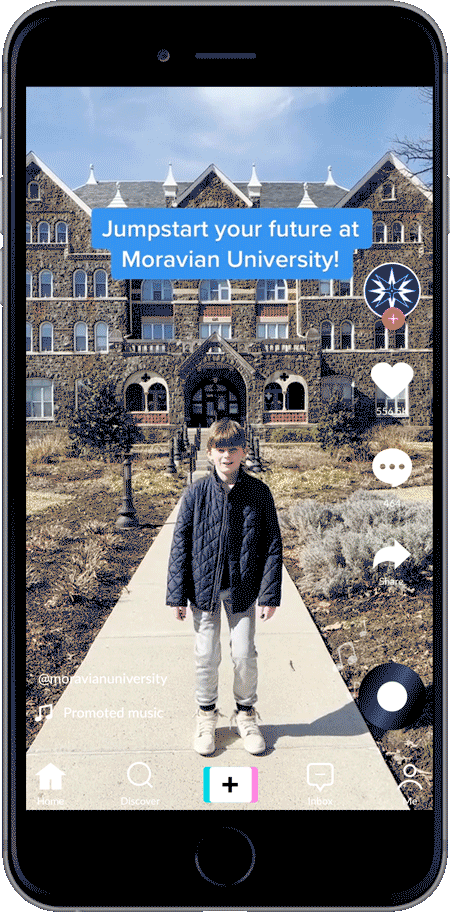
4. Bow Down: TikTok Ads are 👑
If you haven’t dabbled in TikTok Ads yet, you’re missing out on where your audience is reported to spend 25.6 hours per month (Hootsuite)! Spark451 has been running TikTok ads for our partner institutions since late 2020, and the platform keeps outperforming in engagement rates compared to Snapchat and Instagram. It’s a great tool for sophomore/junior brand outreach, brand and awareness campaigns, and event registration pushes. The secret to a successful ad? Well, you’ll have to reach out to us for that answer!
5. Access Live Insights
This last one is not a tactic or platform, but rather an absolute necessity to have in the world of digital marketing — a live dashboard to aggregate all platform data, such as ad campaign metrics and costs, on one screen that is always “on.” Constant access to this info will allow you to continually keep tabs on performance and easily identify opportunities for optimization. At Spark451, each of our paid media partners receives a live data dashboard with up-to-date analytics on all campaigns. Ad campaign performance fluctuates day by day; you should always be able to keep an eye on what’s going on!
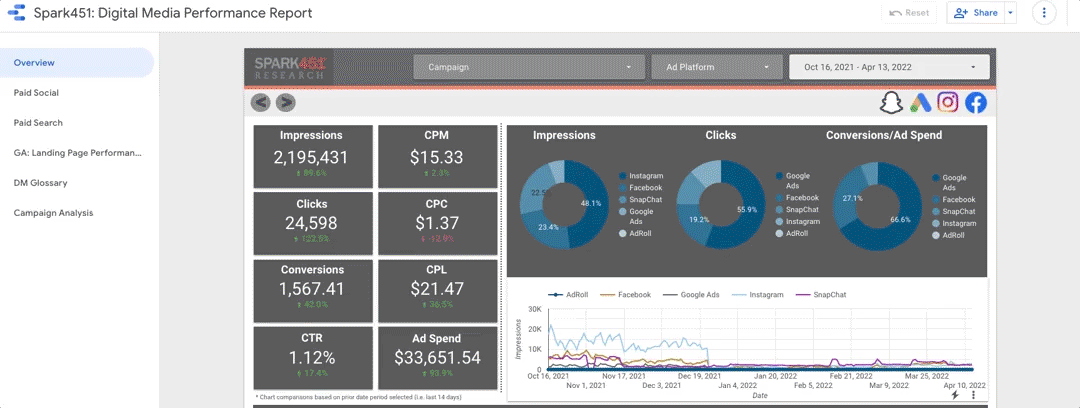
To discuss specific ways to optimize your own institution’s digital marketing plans, please reach out. Our digital marketing specialists would be happy to discuss your current challenges and help you find budget-friendly solutions that will support your goals.
Breaking News: Spark451 Is Joining Forces with Jenzabar
Jenzabar Acquires Spark451 to Fuel the Evolving Higher Education Market
Spark451 Acquisition Further Strengthens Jenzabar’s Capabilities in Empowering Colleges and Universities to Recruit Right-Fit Students, Including Adult and Non-Traditional Learners, as Student Demographics Shift
Boston, MA—April 13, 2022—Jenzabar, Inc., a leading technology innovator in higher education serving the new student, today announced that it has acquired Spark451, a full-service marketing and technology firm providing enrollment strategies for the higher education market. The acquisition comes at a time when creative and modern enrollment strategies are critical for colleges facing declining student populations, shifting learner demographics, and other emerging challenges.
This acquisition is a critical milestone as higher education institutions transform their enrollment strategies during a time of unprecedented upheaval for college admissions. With the acquisition of Spark451, Jenzabar can offer even deeper enrollment strategy expertise and full-service marketing capabilities, including more complete support for institutional enrollment, retention, operations, management, and digital transformation initiatives. The addition of Spark451’s renowned use of data and strategic marketing techniques, including analytics and predictive modeling, helps colleges build or rebuild their brands, which has proven to achieve far-reaching enrollment goals by attracting a new student demographic.
The enrollment crisis facing U.S. higher education institutions has continued amid the pandemic. According to the National Student Clearinghouse Research Center, overall undergraduate enrollment dropped by 6.6% from 2019 to 2021, representing a decline of over 1.2 million students, while community college enrollment dipped by 13%. This enrollment decline is forcing colleges of all sizes to find new ways to build their brands, achieve their enrollment goals, and create new revenue streams by attracting non-traditional students who want to secure lucrative jobs in technology, healthcare, business, and other sectors.
“The model for higher education needs to be reinvented as learner demands change,” said Ling Chai Maginn, Founder, President, and CEO of Jenzabar. “By acquiring Spark451 and bringing them into the Jenzabar Family, we can better help institutions build future-proof enrollment strategies that allow them to find, attract, and engage with their best-fit students while simultaneously extending their reach toward the fast-growing, non-traditional student population.”
“We are thrilled to join Jenzabar, a world-class organization that shares our deep commitment to helping colleges succeed and learners thrive in this new and changing world,” said Steve Kerge, CEO of Spark451. “Together, we offer an unparalleled set of solutions and services for higher education institutions, allowing schools of all types and sizes to overcome their enrollment challenges and build a roadmap to success in an otherwise turbulent market.”
Based in Westbury, NY, Spark451 specializes in enrollment marketing, student search, creative services, and digital media, serving over 200 higher education institutions. Since its inception in 2011, Spark451 has been renowned for its creative enrollment marketing strategies. Jenzabar welcomes the entire Spark451 staff and key members of the management team, including Founder and President Michael McGetrick and CEO Steve Kerge continuing in leadership roles.
According to Maginn, Jenzabar and Spark451 share a powerful commitment to innovation and digital transformation in the higher education sector, guiding schools from traditional, paper-based methods to modern, agile, and digital-first approaches. “Spark451’s deep expertise and creativity in higher education marketing complement Jenzabar’s mission to help institutions build and achieve a long-term vision for success,” Maginn said.
About Jenzabar
Created out of a passion for education and a vision for technology, Jenzabar offers disruptive, innovative software solutions and services that empower students’ success and help higher education institutions meet the demands of the modern student. Over 1,350 higher educational campuses harness Jenzabar solutions for improved performance across campus and a more personalized and connected experience for the student. For further information, please visit www.jenzabar.com or on Twitter @Jenzabar or LinkedIn.
About Spark451
Spark451 is a higher education enrollment strategy, technology, and marketing firm that combines creativity with powerful technology to achieve measurable results. With a mission to help colleges and students fuel their future, the firm integrates a multitude of communication channels and platforms for effective enrollment marketing, student search, creative services, and digital media. Since 2011, Spark451 has worked with over 200 colleges and universities nationwide.
For more information, visit: jenzabar.com/spark451
Questions? Feel free to reach out.
What Are Students Saying About Your Slate Portal?
There are over 1,000 colleges and universities that have adopted Slate as their CRM of choice, including some of the top-ranked institutions in the nation.
With this in mind, we remind our partnering colleges and universities that your out-of-the-box application status portal is likely shared with dozens of your peer institutions. This means that any number of your applicants are comparing their experience on your website, application, and portals with other schools on the list.
How do we know? Students share their opinions for the world to read. Here’s a recent example from Reddit:
The Question: What school do you think has the worst portal?
The Responses:
- “[REDACTED] has the worst portal I’ve ever seen. It’s so outdated and you have to click a thousand times for it to work.”
- “I literally spent 5643673378 hours figuring out how to check my application status 😭 it’s way too confusing.”
- “[REDACTED]. Looks straight out of the 90s.”
- “What the heck is my applicant number and why do they need my city of birth?”
- “It’s boring and poorly designed.”
Excerpts from various posts on Reddit talking about the college search experience
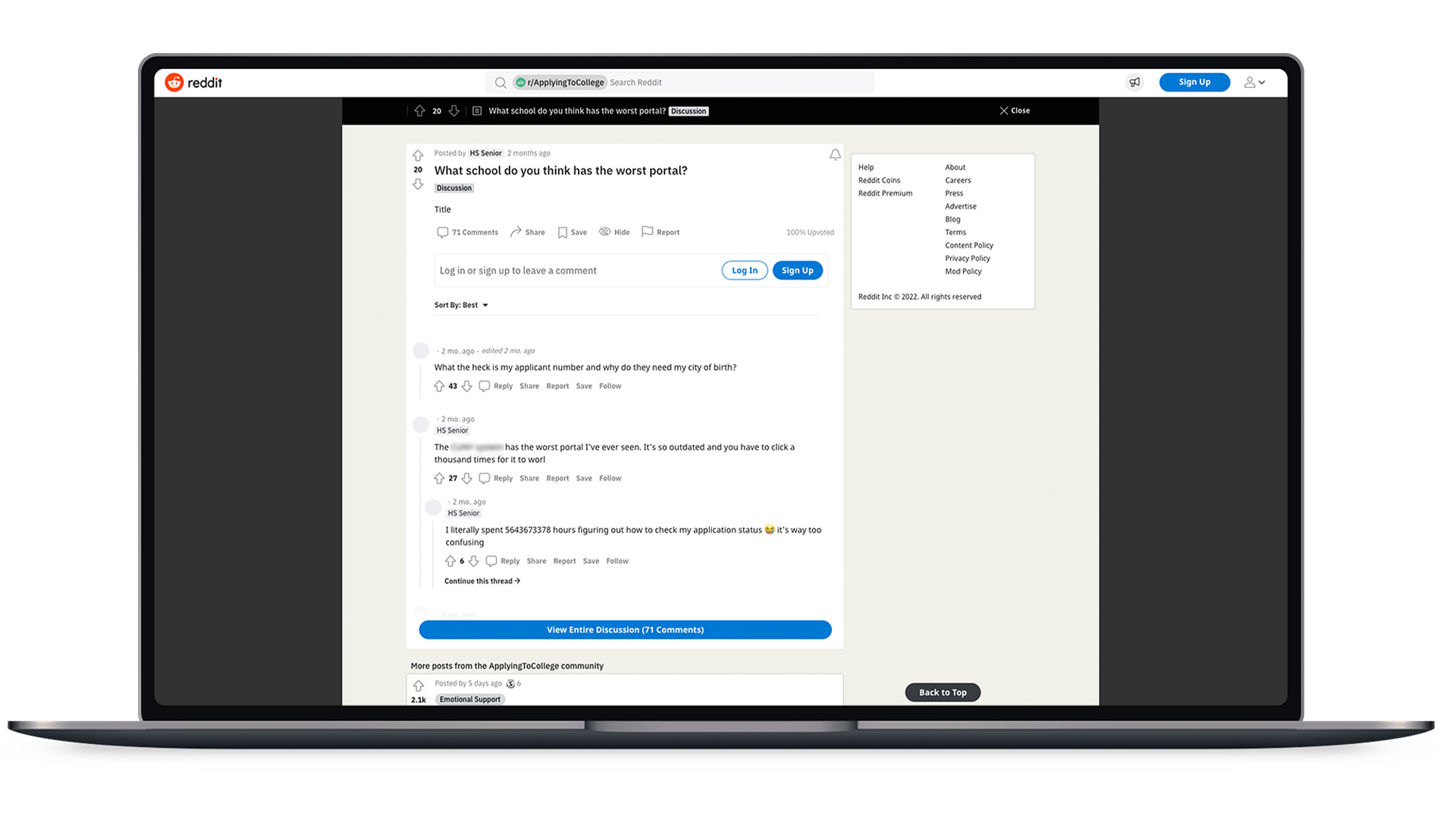
Now, we get that portals in Slate can be intimidating, even if you know a little about HTML and CSS. But if you keep the following three areas in mind when (re)designing and (re)building your next portal, your prospective students will likely thank you.
1. Branding
Considering that your pool is logging into several different Slate portals throughout their college search journey, this is an opportunity to stand out. Improving your base .CSS file can have a huge impact on a student’s first impression of your page. Some of the best-looking portals we create have some impressive static content blocks with some personalized images, information, and beyond.
2. Relevance
Just because Slate offers a widget for every occasion does not mean that you need to place them all on the same page at the same time. Think about what a user needs to know and what is important to them. Use filters to show relevant information based on where a student is in the funnel.
Pro-tip: Liquid markup works in portals — show your prospects the love by personalizing your messaging based on their interests!
3. User Experience
Oh, Slate offers a three-column layout for a portal page, that’s neat! Well, considering we see over 60% of engaged admitted students using mobile devices, designing a sleek, responsive portal page should be a top priority when laying out your portal components.
If you have a lot of information to share with your prospective students, spread it out and add some tabs!
We Can Help
Spark451’s SparkAssist service can help you tap into the full power of your Slate instance by picking up wherever you and your team left off. Our experienced Slate administrators, content creators, and higher education marketing experts have the context, creativity, and technical expertise to beautify, personalize, and improve the digital experience of your prospective students, parents, and beyond.
Because we know every admissions office is different, we offer a wide variety of customizable subscription– and project-based models to ensure we’re delivering as much — or as little — as needed to meet your team’s specific needs. Let’s connect to discuss.
8 Ways to Be a Successful Enrollment Manager in 2022
Springtime has always been one of my favorite times of year on a college campus, and particularly in admissions. It’s a time for helping high school seniors and their families work through the grueling and stressful college decision process (a culmination of what is oftentimes a 12– to 18-month relationship development process). It’s a time for meeting new high school sophomores and juniors as they begin the wide-eyed adventure of exploring their college options. It’s a time when campuses themselves start to burst back to life with spring flora and fauna. And, from an administrative perspective, it’s a time to plan for the future; budgets, strategies, personnel adjustments, it’s all on the table for consideration.
So, as you enter into this all-important planning phase, in the midst of all the other on-going excitement and work to be done, I’d like to share with you some big picture strategies that will help you be a successful enrollment manager in 2022 and beyond.
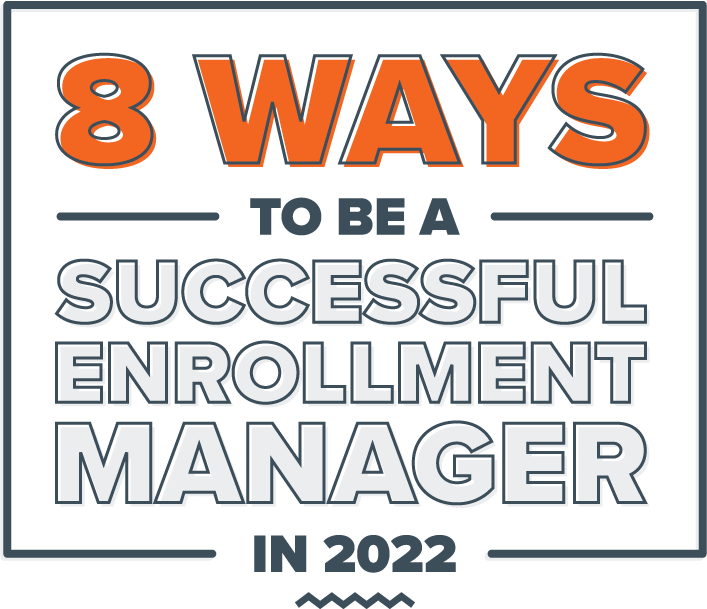
1. Let the past and present inform your future
2020 and 2021 brought major shifts in the higher education enrollment landscape. Some of these shifts brought immediate financial burdens on many middle– to lower-tier, and mid-sized to small colleges and universities. Fewer students enrolled in college, particularly students of color, as well as first generation and lower income students.
Many students and families changed their college plans by limiting their geographic search of college options to stay closer to home, and affordability has become as high a priority as ever before. In many cases, this has led to students enrolling at institutions that they otherwise would not have chosen.
At the same time, we are witnessing a major shift in the national workforce. “The Great Resignation” points to a societal desire for individuals to improve their career prospects, and in turn, their overall quality of life.
These trends all point to future opportunities for colleges and universities in the coming years.
- Adult learners and degree completion seekers will be on the rise. Do you have programs to accommodate them?
- The transfer student marketplace is primed for major activity. Are you actively promoting your institution to prior-term prospects and applicants?
- Graduate programs, licensure programs, and professional certification programs will be demanded in record numbers. What does your institution have to offer?
Finding ways to take advantage of market trends will set your institution up for sustained success in the years ahead.
2. Keep a multi-year focus
This one is especially important for the managers at small and mid-sized institutions across the country. We get it, your primary focus is to bring in this class this May (or June or July…or even August). But do not forget about fueling your funnel for the next two years’ classes, or you’ll find that you’re always playing catch-up.
If you happen to fall in the category of schools that sometimes considers sophomore-junior search an afterthought, this is the year to become more aggressive. Consider this: Spark451’s original research — based on feedback from thousands of college-bound high school students — shows that 50% of students started looking at colleges seriously by the beginning of their junior year, and that number jumps to 70% by the end of junior year. If you wait for senior search to truly engage a potential applicant pool, you’ve missed out on a majority of your potential audience.
3. Look for ways to narrow your team’s focus and improve efficiency
Your recruitment staff is the lifeblood of your institution’s enrollment process, and by extension, its revenue and financial stability. Yet too many enrollment managers view their counseling staff as little more than temporary workers who are to be ridden hard for as long as they can take it, and then replaced with a new crop every couple of years. There’s a better way.
Coaching your staff on the big picture processes behind the enrollment funnel, and collaboratively building key performance indicators to be achieved at each phase of the process will empower your team to not only take ownership of the results, but to develop their own best practices to reach those benchmarks.
Additionally, by tracking and analyzing the engagement of your prospect, applicant, and admitted student pools, you can help your team to focus their efforts on the segments of the populations where they can have the most impact. Some simple tools to help in this process include:
- Prioritizing student engagement — focus on campus visitors, organic inquiries, and students met during recruitment travel.
- Utilize student surveys to assess level of interest — reach out to dormant prospects and incomplete applicants en masse with quick two– to three-question surveys to determine who’s worth tasking your counselors to follow up with.
- Track email and website engagement to help trim down your prospect pool throughout the year so you don’t waste time and energy pursuing uninterested students.
4. Secret shop your institution
Are your communication campaigns, printed touchpoints, and mobile platforms truly working the way you planned? Take the time to find out what it feels like to receive these items as a prospective student.
Create a seed email address using a test name. Inquire to your own school and track what you receive and when you receive it. Look at everything with a critical eye and try to momentarily forget your institutional knowledge. Be sure to ask yourself these questions when reviewing each item:
- Does your website truly make it easy to inquire and apply?
- Are your communications as inspirational as they are informative?
- Do your materials explain “why” as well as “what?”
Also, closely examine that first printed communication — for more than five years, students have been telling us that they enjoy personalized letters most.
Finally, venture out on an unplanned admissions tour, or send a friend or family member who can have a supportive, but critical eye. Take notes and work to make real improvements. Try to value and train those student ambassadors, as they can have such a major impact on your admitted yield.
5. Break down silos, and build bridges
College and university campuses are notorious for being a collection of departmental bubbles, or “silos,” where everyone is consumed with their daily tasks, and no one really knows what’s happening elsewhere throughout the campus community. Breaking this mold is generally beneficial for any institution, but it’s particularly necessary for an enrollment management division.
As the frontline workers and the face of an institution, an admissions staff has a unique dual perspective that can be invaluable in pinpointing necessary improvements, as well as opportunities for expansion and growth. Connecting admissions with other divisions on campus can allow colleagues in academic affairs, athletics, buildings and grounds, and other departments to understand how their day-to-day work impacts the recruitment and enrollment process. Understanding how you’re all connected is key to finding cross-campus synergies and improving community morale and camaraderie.
6. Withdraw admitted students sooner than later
Okay. This is a continuation of #3. But it’s an important enough point to reiterate. Withdrawing an admit from the funnel is not always a bad thing, especially when that student has demonstrated a lack of interest and you want to avoid wasting any more resources on them. Sure, none of us like to hear that a student is selecting a different institution, but the reality is that you will only yield about 20% of your class.
Removing those students who are not interested, but have not officially withdrawn, will help your team focus on those students where you have a real chance. It will also help you, as a manager, to make more accurate projections about your class.
7. Learn to say “no”
“You will never reach your destination if you stop and throw stones at every dog that barks.”
― Winston S. Churchill
Being focused on a set of goals also means eliminating distractions. So, when your president asks you to organize this May’s commencement ceremony when you should be focusing on bringing in the class, find a way to politely decline and help them to understand why your time would best be spent focusing on your primary objectives. What makes you a great enrollment manager is always at risk due to distractions on campus.
8. Align with trusted partners
If you’re facing any additional enrollment strategy challenges as you plan for the cycle ahead, our team of veteran admissions professionals and enrollment marketing specialists would be happy to help. Feel free to reach out today!
The Return of College Fairs is Gearing Up to be Big: It’s Finally Time to Rethink Your Travel Materials
I attended my first college fair this month.
Correction, I attended my first college fair as a parent of a high school sophomore just starting the college search. For roughly 15 years, I’ve assisted partner colleges and universities in their recruitment efforts through marketing campaigns and other creative projects. But now, I have the opportunity to experience this kind of event through a new lens.
Joining my daughter in the cafeteria at Marjory Stoneman Douglas High School, which had been converted into a coliseum for collegiate competition, was like field research for me. I am happy to share a few key takeaways with you.
Grab attention and invite them to approach
Looking around the fair, my daughter recognized the brand names — even a few we work with — and I spotted some schools I’ve never heard of. Yet, among all, there were few things that stood out to us first:
- Is the school’s logo even readable? Is it optimally sized to the tablecloth or runner, or is it hidden by folds? Don’t make attendees struggle to read the name of your school or they’re likely to walk past it.
- Is the brand prominently and consistently displayed with the school’s primary colors matching across all materials? Nothing says “sloppy lack of quality” like showing off your signature blue or maroon in 10 different shades or using multiple versions of the logo across all materials. While the collateral on your table may be produced at different times, on different materials, and by different processes, consistency is key to project high quality.
- Is the table attractive, tidy, and well organized? Give guests a reason to approach by flaunting your best giveaways and informative pubs.
- Is there information easily visible to those just passing by? Consider using lightweight pull ups and table tents, as well as available tech to show off interactive content like teaser videos or campus tours. Don’t forget that showing off your school pride extends to attire, too. Consider a lapel pin, tie, or even branded shirt to complete the impression.


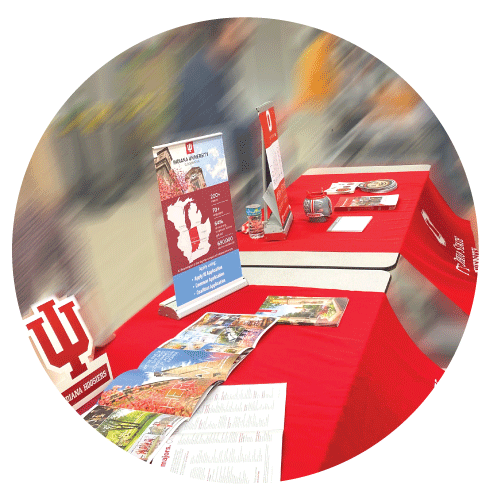
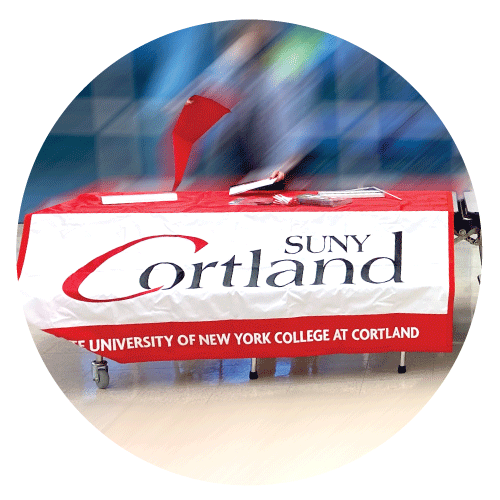
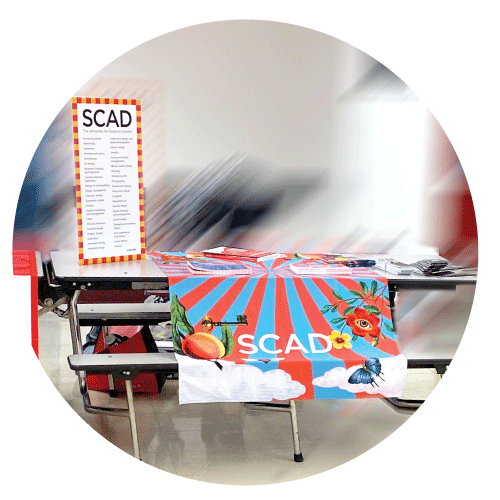

Give them a reason to invest a few precious minutes that may lead to a return on investment for years to come
The faces of some high schoolers — usually those escorted by the most enthusiastic parents — showed reluctance, or uncertainty. Even when they did approach a booth, they often weren’t sure how to begin or what they were supposed to ask. What can you do to ease the initial engagement?
- Why not feed them an opening line? Consider a sign that offers a scripted opening around your point of pride: “Ask me how [your institutions] can help make your education affordable.”
- Boldly display key stats and information on pullups or table materials to give your guests general information. This will enable you to spend your time on deeper discussion.
- Have abundant swag laid out for the taking; who doesn’t love a freebie? Offering a fun branded giveaway (when permitted) is a no-pressure way of starting up a conversation.
- Integrate interactive elements through A/R or simply use QR codes. I know we’re all still in disbelief that the square graphics made a comeback like they did. Looking around the hall, I was hard pressed to find a student without a phone in their hand. Give them something to scan quickly. You can drive digital engagement by offering an A/R experience of a campus facilities tour or by scanning a QR code for a quick visit to a landing page’s inquiry form for additional information.
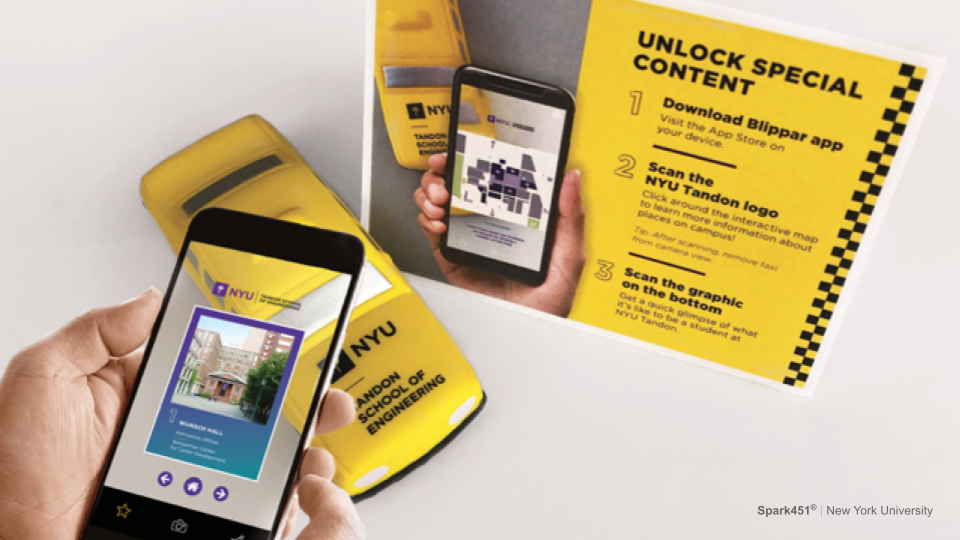
Offer them “one for the road”
You’d be surprised how effective tangible takeaways can be — even for digital natives. Giving your guests something to take with them is an important way of continuing the conversation at home, after they’ve had time to process and compare everything they learned at the college fair.
- Unique formats, special print treatments, and unusual materials and textures make your materials desirable at first glance.
- Of course, what’s inside is even more important. As families are beginning to compile their list of potential schools, make sure your travel publications contain vital information about areas of study, location, outcomes, cost and aid, average scores and GPA requirements, and visit information. Don’t forget to include a vanity URL to drive (and track) engagement.
- Do you have differentiated materials on the ready? A single travel piece may not cut it anymore. Do you have brochures, single sheets, or even postcards to introduce your newest programs? Consider which areas of study are struggling and prepare marketing materials to support them. Make sure you have pieces covering financial aid and outcomes, especially important for parents/guardians. And let’s not forget campus life pubs promoting the benefits of living on campus to keep your residence halls filled. Before you get dizzy at the thought of hiring a moving truck to transport everything, remember, you don’t have to lug dozens of every type of piece with you. With a couple of samples on display, you can offer an all-encompassing digital guide with downloads or to mail them physical copies in exchange for their contact information.
- Whether you still use inquiry cards or offer a digital form, make sure they sign up to receive all other information in the form of your nurture stream.
So, what do you really need for your recruitment travel?
By now, you realize that basic promotional items such as a tablecloth, an inquiry card, and a single brochure are not enough. I have shared a few ways to stand out in the minds of your guests (and avoid “travel envy” from your own road warriors), but there are countless other tactics that are appropriate for different schools. Make sure that when it comes time to present your institution’s offerings, nobody has cooler swag or more engaging publications and interactive table displays to attract foot traffic at busy college fairs.
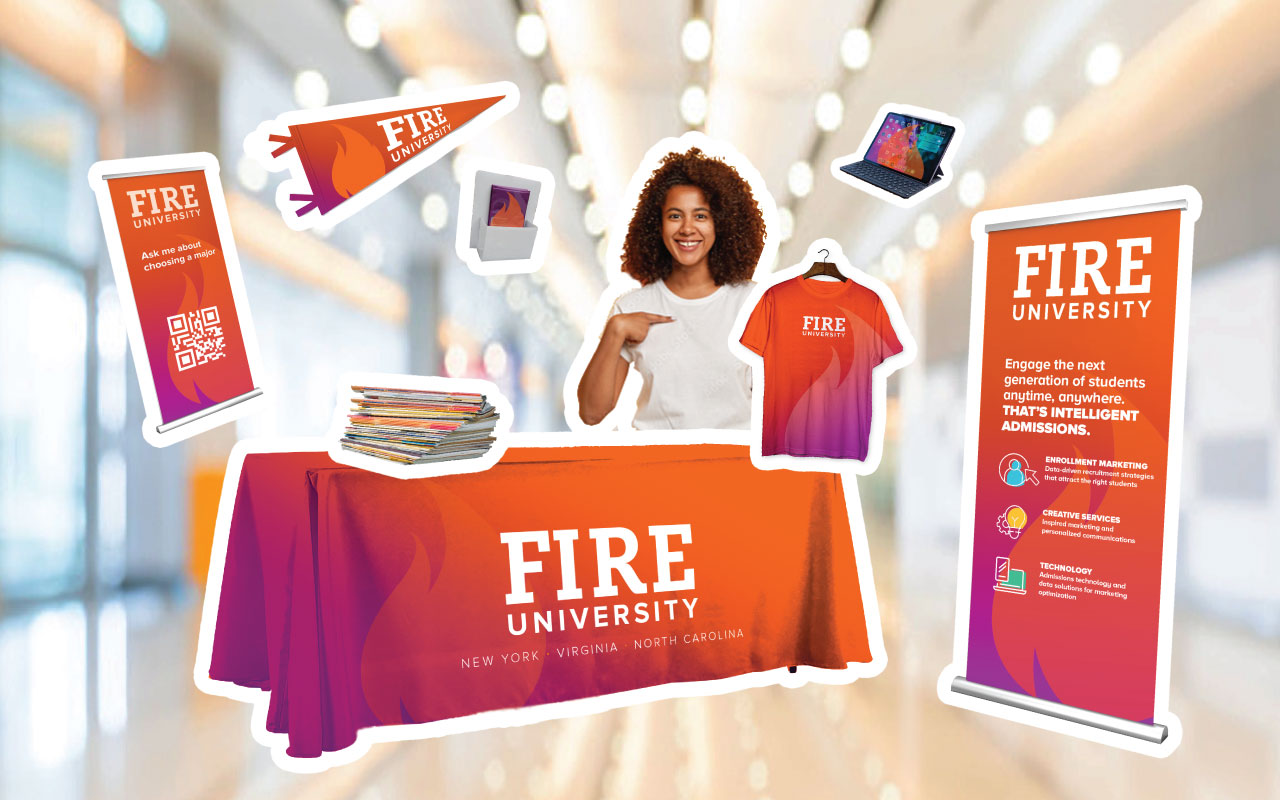
Why it’s crucial to plan now for next season
Today’s college-bound students have faced a difficult few years, so many are eager to finally embrace the excitement and freedom of what college life has to offer and are hoping to find the right fit school. Recent trends show that students are applying to more and more colleges, so there’s greater pressure on you to do everything you can to set your institution apart from the competition and forge a genuine connection. There are few better opportunities to do that than on the road at college fairs and other recruiting events, and that end-of-summer rush will be here before you know it!
Get it done professionally
Now is the time to make sure your road warriors have everything they need to help recruit your best class yet. The admissions and creative professionals at Spark451 are eager to help you do just that. We’ll work with you to produce inspiring, professional materials that will make it easier to engage prospective students and drive conversions. We’ll even handle production and project management from conception through delivery, so your busy team doesn’t have to!
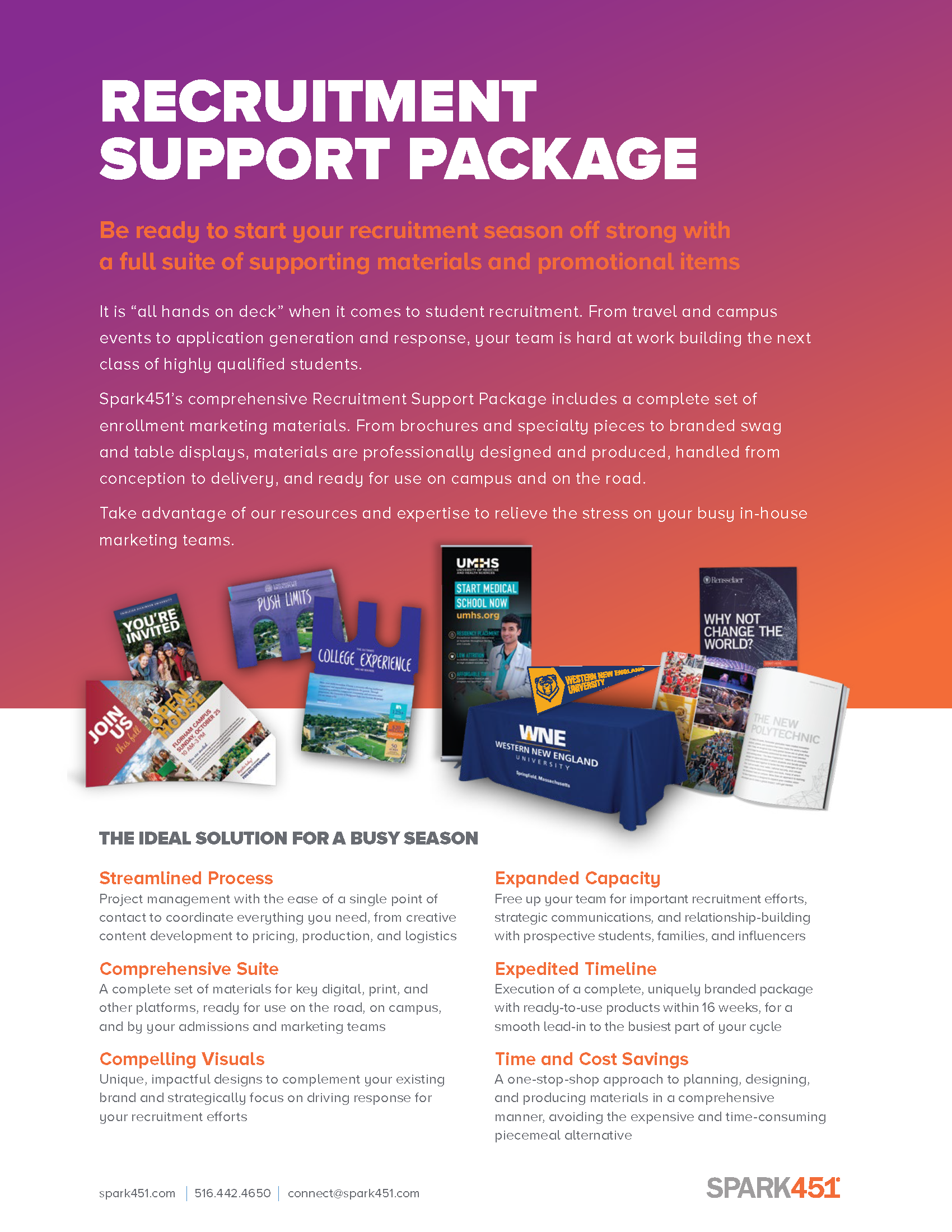
What’s even better is that we have a comprehensive Recruitment Support Package, which features a full suite of enrollment marketing materials — including a collection of travel pieces, recruitment table displays, branded swag, and more to fit a budget of any size. When you’re ready, reach out so we can help you determine which products best suit your means and enrollment goals.
Rethinking and Tracking the Campus Visit
We all clearly understand that the impacts of the COVID-19 pandemic have changed the ability of students and their families to visit campus while, at the same time, the rapid shift to virtual events has also expanded what constitutes a visit in general. So, what has really changed when it comes to campus visits and their impact on your enrollment funnel, and how should you be adapting your approach to planning, marketing, and tracking events in the new normal of 2022? Let’s explore, shall we?
To begin, here are just a few key findings from Spark451’s most recent College-Bound Student Survey:
- Survey respondents ranked “location setting” (#3) and “campus appearance” (#6) among the top 10 factors they considered when making their college decisions
- 21% of students said they knew their school was right for them when they first visited
- 57% of students said they visited campus before making a deposit
But here is where the COVID-inspired, Zoom-driven realities of our time have shown their impact:
- 64% of respondents said their college decision was influenced by attending a campus event, such as an Open House or Admitted Students Day, down from 74% four years ago.
- And over 50% said that those impactful “visits” were virtual events!
Campus Visits—Still The Ultimate KPI
It’s a nearly universal truth of higher ed admission. Students who visit campus generally move through the admissions funnel at a significantly higher rate than those who don’t visit. Not only that, the later in the admissions process that they visit, and the more times they visit, the higher the likelihood that they will enroll. So it stands to reason that schools should place a premium on finding ways to get students and their families to visit.
While most schools are acutely aware of the negative impact they’ve felt by the recent decreases they’ve seen in campus visitors, too few actually factor campus visit numbers into their Key Performance Indicators (KPIs) for their enrollment funnels and projections. Most institutions keep track of the total number of campus visitors from year to year as a general indicator of interest in their prospect pools. This approach provides a broad sense of overall interest in your institution, but it falls short of providing a true projection of potential enrollment. Tracking campus visit totals alongside your admissions funnel data at each stage—prospects, applicants, admits, and deposits—will give you a truer sense of the level of interest and engagement, and the overall strength within each segment. In an ideal world, your visit percentages should increase at each stage of the funnel. At the very least, you should aim for consistency throughout.
To gain an even more robust level of analysis of your visit pool, you may want to consider utilizing an analytical service like Spark451’s proprietary Enrollytics service to consolidate your engagement metrics, including campus visits, along with demographic, academic, and socio-economic factors to turn data tracking into enrollment predictability. By reviewing your historical enrollment and visit data, we can help you determine just how impactful your campus visit experiences are on your admissions funnel productivity, as well as next-level data like who is visiting and who is not. By drawing true correlations between campus visits and a student’s progress to the next stage of your admissions funnel, you will be empowered to either continue your already effective visit processes or enhance them as needed. Additionally, you will gain a data-driven perspective on the likelihood that your applicants and admits will eventually matriculate.
Get the Most Out of Every Visit Opportunity
So, it’s clear that enrollment planning must still involve maximizing campus visitors. However, we must also now adjust our mindset to what our audience considers to be a campus visit these days. The realities of the pandemic era have fundamentally altered the ability, if not the desire, of many families to make long-distance trips to visit multiple campuses in person for a variety of reasons, ranging from health concerns to finances. Additionally, the rise of virtual information tours and info sessions, and even full scale events like virtual open houses immediately made necessary in 2020, have enabled families to broaden their definition of a campus visit, and in turn, “visit” more schools than ever before.
This is not to imply that the virtual visit experience is a good replacement for an in-person visit. Indeed, there’s no replacing the feeling of finding one’s home away from home that a student can get when they set foot on the “right fit” campus. It’s priceless.
But the fact is that fewer families are visiting in person, and colleges and universities can’t let that be a hindrance to the overall enrollment boost that campus visitors provide. The answer is to provide as many and as varied an assortment of on-campus visit opportunities as possible, but to also expand your reach by providing virtual options for those who need them.
Here are several strategies for planning both on-campus and virtual visits that drive enrollment results:
1. You don’t have to do more to do better
Adding a consistent virtual component to your campus visit repertoire doesn’t have to mean doubling the workload of your team by doing twice as many events. By setting aside specific times during your campus events where families can join in online for an information session or meet with a counselor, you can increase your reach without adding to your calendar.
Additionally, working with your IT and audio-visual teams on campus to plan for well-orchestrated recordings of your campus events can enable you to post a visit experience online for families to view whenever and wherever they are available.
Spark451 has a wealth of resources and solutions to help you make the most of your virtual visit offerings.
2. Invite students early and often
Communication to students at every stage of your admissions funnel should involve calls to action to visit campus. Don’t wait for the student to request a visit—make it clear that they’re always welcome, and give them a good reason to make the effort!
3. Provide programming tailored to each specific funnel stage
One-size-fits-all campus events are too vague and impersonal. Generation Z students prefer more intimate, even personalized visit experiences. A high school junior and an admitted senior need very different information and experiences in order to feel like their visits were helpful. Be sure to have designated events for underclassmen, senior prospects, applicants, and admitted students — each geared toward helping attendees take the next step in the funnel process.
4. Reach unengaged populations with additional, public-service events
In addition to the standard admissions-centered campus events and visit experiences, it’s worthwhile to provide generally informative, community-oriented, and/or service-related visit opportunities as a means to maximize foot traffic on your campus. Some simple examples of public service or general info events are Financial Aid Nights, events where the public can gain free tax-prep assistance from students in your business department, or program-specific field trips for high school classes. These “non-admissions” events can serve as incredibly compelling “sales pitches” to otherwise unengaged populations, which can allow you to expand your long-term funnel.
5. Take a multichannel approach to publicizing events
Communicating visit opportunities across multiple mediums will help ensure your message lands. Mailed invitations are always impactful for parents, while emails and texts make it easy for students to RSVP with the click of a button. This is where a robust CRM platform is invaluable. It empowers you to centralize and segment your communication efforts for hyper-targeted and efficient messaging, to simplify the visit registration process, and even keep consistent records of all campus visitors. If you’re one of the many campuses that has a CRM like Slate, Salesforce, or Element451 in place, but doesn’t have the personnel or bandwidth to use it to its fullest potential, the team at Spark451 provides our SparkAssist partnership program to provide the backend support you need.
6. Incentivize campus visits
High school students are applying to more schools than ever these days. Our research indicates that 40% of students today apply to eight or more schools. This ever-increasing “short list” means that visiting every school is less and less feasible. Therefore, you must provide compelling reasons for a student to prioritize visiting your campus. Incentives can range from the basic visit scholarship or travel voucher to tying your admissions programming to exciting events on campus or in the local area. This serves the purpose of encouraging campus visits while also telling the story of what there is to do outside of class.
We Can Help
As a full-service marketing communication and technology firm made up of seasoned admissions leaders and an award-winning in-house creative team, Spark451 is uniquely positioned to partner with colleges and universities to utilize best practices along with bold new ideas to boost your campus visit programs and positively impact your enrollment funnel at every stage. We’d love to speak with you about your school’s current campus visit and event challenges and help strategize some unique solutions. Reach out and connect today!
4 Tips for Improving Your Slate Communications
Every conversation we have with enrollment teams has one thing in common — nearly everyone believes that there is more they should be doing to fully leverage Slate to develop mature marketing and communications efforts.
Chances are that if you are reading this, there is something that you’ve always wanted to do in Slate but haven’t found the time to get it done. Whether your goal is to build a drip campaign, learn Liquid Markup, or build the Rules and Populations to automate your workflow — we know there is something that “you’ll get to eventually.”
If you’re thinking about revamping your existing communications or starting something new, keep these 4 tips in mind to improve your Slate communications.
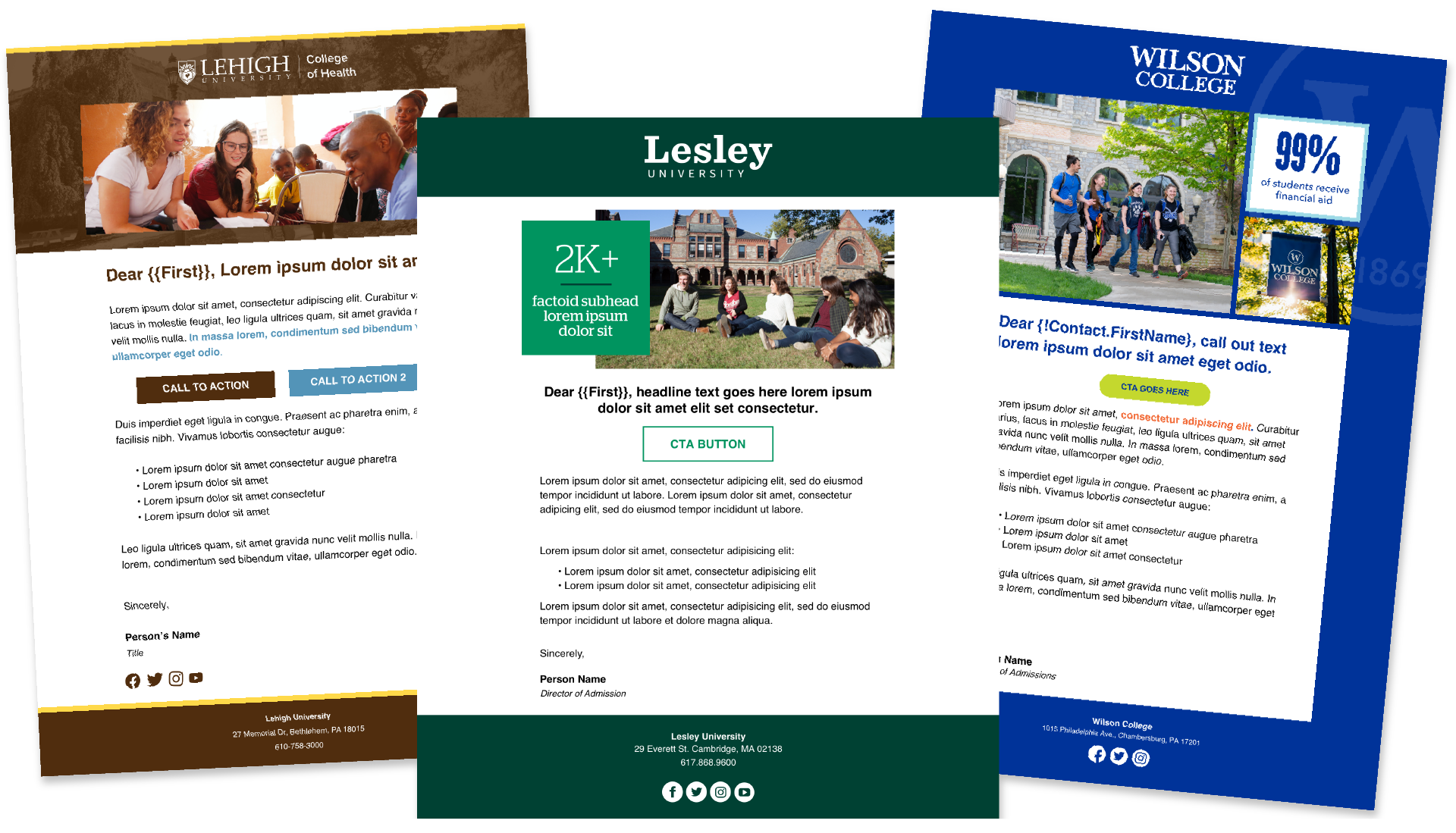
Built with Branding
You need something slightly more captivating than a logo + image + brick of text. Leverage your images, videos, and brand identity to bring Slate templates to life. We put our templates through rigorous tests to make sure they can be dynamic, responsive, and hold up to dark mode, light mode, and everything in between on all devices. Using a well-branded, captivating, and stress-tested template can build better affinity to your messages.
Maximize Personalization
Are you a Liquid Markup pro? Or do you have messages with snippets? Segmenting your pool into specific populations by academic interests, distance from campus, household income, and beyond helps tailor a student’s journey with your institution. The more direct and personalized a message is, the better the engagement. That’s a mantra we live by.
Consider the Best Timing
Delivering the right message to the right person at the right time is the goal for every message that is sent or scheduled by our team. Whether we are developing a drip campaign, delivering trigger-based behavioral marketing messaging to website visitors through Ping, or following up with an application starter, we triple-check that our messages are timely and relevant.
Work Smarter, Not Harder
Once our communication flows are planned, written, designed, and built, we seek to automate as much as we can to make the lives of your team easier. Using Rules, Populations, and schedules in Slate, we can ensure that messages are being delivered so that your team can focus on reading, traveling, calling, and visiting.
Spark451’s SparkAssist service can help you tap into the full power of your Slate instance by picking up wherever you and your team left off. Our experienced Slate administrators, content creators, and higher education marketing experts have the context, creativity, and technical expertise to automate, personalize, and beautify what you’re sending to prospective students, parents, and beyond.
Because we know every admissions office is different, we offer a wide variety of customizable subscription– and project-based models to ensure we’re delivering as much — or as little — as needed to meet your team’s specific needs. Let’s connect to discuss.
Generating and Nurturing Higher Education Leads
Since you are a higher ed admission or marketing professional, I know that you rely heavily on digital media and email to communicate with your target audience: prospective students. But, are your digital media campaigns aligned with your email campaigns?
As a marketing professional at Spark451, I am part of the email and digital media team that has sent out over 100 million emails and optimized over 300 digital media campaigns in just the last year. We have set the tone for all our partnering institutions on best practices to achieve engagement rates that exceed industry standards.
Your digital marketing and email—both powerhouse channels—should operate in unison to turn your prospects into applicants. After all, sending the right message, at the right time, is key to any successful marketing campaign. Plus, with the latest privacy changes, it’s more important than ever to communicate to your prospects through various avenues to reach them where they are using every day. Here, I’ll share several smart ways to use digital media and email to engage prospective students and usher them through the enrollment funnel.

Build Brand Awareness and Generate Leads
Before you can ask students to apply, they need to know about your school, so the first step with any prospective student is to spark interest. You need to build Brand Awareness, so students can become familiar with your college or university and keep it top-of-mind. Utilize creative digital media channels such as TikTok, Snapchat, Programmatic Display, or ConnectedTV to reach your target audience with eye-catching ads that will get them excited about your institution.
After building excitement and intriguing your audience, you need to keep the momentum going, which means gathering actionable user information with a Lead Generation Campaign. One of the most important factors in a lead generation campaign is the landing page. Driving your audience to a stand-alone landing page with an RFI form that has limited fields will bring in the most leads, as it prevents users from leaving the page and getting distracted. In fact, one of our partners saw a 500% increase in leads by using a campaign-specific landing page. Reach your target audience on lead generation platforms such as Facebook, Instagram, and Google Search Ads (formerly Adwords).
Nurture Each Lead
After collecting the digital media leads, it’s important to acknowledge their inquiry. In fact, most people expect to receive a follow-up immediately after submitting their information. Setting up a transactional email such as an Auto-responder Email is the best way to respond to the interested student right away. Use this message to share high-level information about your institution or the program and keep the reader excited for more. This type of transactional email will save you time and fulfill the interested student’s immediate needs.

Keep the Ball Rolling
Build more engagement and further nurture your leads by setting up a series of automated emails in a Workflow Email Campaign. Due to the automated nature of this workflow, as more leads start trickling in, each individual will have their own journey through the workflow path.
Each email in this series should include relevant and targeted messages on a variety of topics that highlight your institution’s unique offerings and qualities. Develop a compelling narrative flow that will keep your readers looking forward to receiving more emails, and include information that will ultimately push them to apply.
Our partnering institutions have seen great success and an increase in applicants over the course of their workflow campaigns. In fact, one of our partners with a robust email workflow had 43% of their digital media leads submit an application this year. By communicating to your target audience on various platforms with personalized and targeted messages, your institution can expect an increase in applications. Just by setting up automated emails to nurture your prospects, your leads can turn into applicants.
Push to Apply
Drive-to-Apply campaigns on social media are a great way to further encourage prospective students to apply. With the recent changes in privacy protection rules for targeting minors, it’s even more critical to reach out to your audience through multiple channels to help yield more applicants and keep your school’s name in mind when the student is ready to start the application process.
One of our partners, a small private college in PA, started doing digital media and email campaigns with us this year—including social drive-to-apply campaigns. So far, they have seen an approximately 28% increase in applications over the last year, thanks to their use of our DM and email strategies.

Bonus Efforts
To further support your efforts on digital media and email, another channel to communicate with prospects is text messaging. In today’s digital world, everyone is constantly on their phones, so the best way to reach students is on the device they have in their hands 24/7. According to our latest college-bound student survey, one-third of high school seniors say it’s ok for a college to text them at any point during the college search process.
We know it can be overwhelming to determine which tactics to deploy to get the best results as you move prospective students through the funnel, and that’s why we’re here to help. As you continue to refine your marketing plans for the remainder of the cycle, feel free to reach out to the Spark451 team to discuss how we can optimize your digital media, email marketing, and other campaigns to turn your prospects into applicants.
The Power of Connected TV
In the latest installment of our new video series, “Total Conviction,” Ann Levy, Spark451’s Associate Director for Digital Marketing, joins CEO Steve Kerge to discuss the power of Connected TV (CTV) for higher education enrollment marketing. In fact, she shares three key reasons your institution should consider adding CTV to your marketing strategy in the year ahead. Check it out above!
When you’re ready to dive in deeper on how CTV can support your specific goals, please reach out. Our digital and enrollment marketing experts will be happy to help you develop a budget-friendly plan.
You can also revisit the full collection of “Total Conviction” videos here!
Ten Over Ten
In December 2021, Spark451 marked a major milestone—the celebration of our 10-year anniversary! As we reflect on the past decade, we are overwhelmed with feelings of warmth and gratitude for all of the support and collaboration among our team, partner schools, friends, and family.
Since our agency began, the Spark451 team has proudly delivered strategy, creativity, analytics, innovation, and most relevant to this blog post, original research. For example, in 2013, we began producing an annual research project, “The College-Bound Student Survey.” We have conducted this survey for more than nine years, and over that time, we have collected input from more than 40,000 college-bound students from all parts of the country. Their feedback spans topics including social media and technology habits, application activity, enrollment considerations, and more.
Before we turn the page and embark on our second decade, we thought it would be both fun and interesting to review all of our College-Bound Student Surveys to date and show you how certain things have evolved (or not). We’ve selected 10 questions that we have asked in multiple annual surveys in order to illustrate how students’ answers have trended over time.
We hope you enjoy this brief dive into students’ mindsets over the past several years.
10. Utilizing Social Media for College Search and Selection
It’s amazing to see how students’ social media habits have evolved in such a short amount of time. In 2013, we introduced the question, “Which social media did you utilize throughout your college selection process?” We continue to ask this same question today. Here’s a glimpse of how that answer has evolved in the past decade:
In 2013, Facebook dominated, while names like Snapchat and TikTok didn't even exist
9. Time Per Day Spent on Social Media
In 2016, Spark451 began tracking the average time students spend per day on social media. The amount of time has actually decreased pretty dramatically in the last five years. In 2016, the highest ranked answer was 3–4 hours, while in 2021, the dominant answer, by far, was 1–2 hours.
This statistic is particularly interesting, as many of us would jump to the conclusion that COVID-19 has increased a high schooler's social media time. However, the data we have collected does not support that notion.
8. High School Students Remain Social Media Voyeurs
In 2018, we introduced the question, “How would you characterize your social media usage?” The past four years’ responses continue to demonstrate that most students regularly view social media, but don’t often post.
7. Device Usage
Over the last seven years, there have been incredible advancements in terms of market saturation and usage of technology devices—and we’ve had to evolve to keep up. As you’ll notice, in our more recent surveys, we’ve had to incorporate names of devices we never would have thought to ask about way back in 2014. While iPhones still rule the device world for high school students, the increasing availability and usage of other devices over the last several years is nothing short of amazing.
6. Student Communication Preferences
Another question we introduced in 2013, and continue to seek feedback on today, relates to how students prefer potential colleges to communicate with them.
It may not surprise you to see that email continues to be the most preferred form of communication, but it’s certainly eye-opening to see how text messaging has slid into the number two slot from a minorly-ranked position.
5. Applying to Colleges—Sheer Volume of Applications
Over the past decade, we have asked students to tell us the total number of schools to which they’ve applied. While we all have impressions of how this has shifted over the past 10 years, statistically, it has remained relatively flat. (Note: As you’ll notice, we expanded the number of options available over time in order to allow for a bit more specificity.)
4. The Growth of Test-Optional Admissions
Understandably, COVID-19 accelerated the expansion of the test-optional environment; however, the number of students interested in considering a school because they were test optional almost doubled between 2013 and 2021.
COVID-19 was the primary factor driving an increase in students who wanted a test-optional admissions school. Between 2013 and 2019 (prior to COVID-19), the statistic remained quite flat.
3. Decision-Making Factors
Over the last decade, we have collected data from tens of thousands of students on what is most important to them when it comes to deciding on the right school. While there are some shifts among secondary factors, the primary three reasons they give haven’t changed one bit: academic quality, cost/financial aid, and scholarship offers consistently move the needle.
Over the past decade, we have asked this same question to parents of college-bound students. The only difference we saw from the students’ data is a flip of the first and second answer, making cost/financial aid the number one motivating factor for parents.
2. Knowing When a School Is “The Right School”
Over the years, we have made an effort to understand the emotional and informational decision path of a college-bound student. As part of our research, we have included questions like, “When did you know the school you chose was the right school for you?” Though the numbers have shifted slightly over time, campus visits and school comparisons have consistently risen to the top.
1. Expectations for Life After College Graduation
Over the past 10 years, we have asked upcoming first-year students about how they envision their future beyond college. The growing emphasis on being employed has certainly molded the mindset of the first-year college-bound student.
